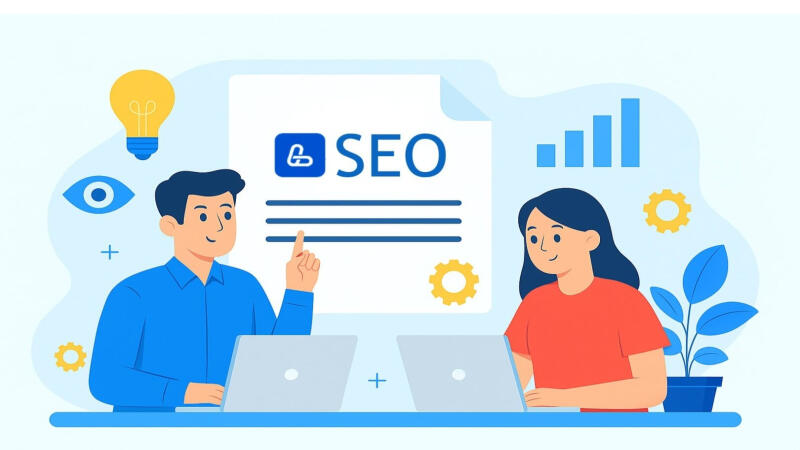You’ve likely noticed that some websites consistently rank on the first page of search results, while others languish in obscurity. Why does this happen? The secret to success often lies in well-crafted SEO content.
In this article, we’ll explore what is SEO content, how to create it, the different types available, and how to use it to boost your business. No fluff or jargon – just practical insights you can apply today.
What is SEO Content: Core Concepts and Principles
SEO content refers to website materials (text, images, videos) designed specifically to attract visitors from search engines while addressing their needs.
Unlike regular content, it’s developed with search engine algorithms like Google’s in mind, yet remains engaging and valuable for human readers. SEO based content is structured, incorporates relevant keywords, answers specific user queries, and helps search engines understand the page’s purpose.
What is SEO optimized content, SEO-friendly content, and SEO-focused content? These terms are often used interchangeably online, but they have subtle differences. Let’s break them down:
- SEO optimized content is content created or refined to improve a website’s ranking in search engines (Google, Bing, etc.). It involves targeted use of SEO techniques like keywords, meta tags, text structure, and other elements to enhance page visibility. Key features include:
- Technical optimization
- Algorithm-focused approach
- SEO-friendly content prioritizes user experience while incorporating SEO content creation principles. It’s “friendly” to search engines but feels natural, useful, and engaging for readers. Its features:
- Balances SEO content and quality
- Less technical emphasis
- SEO-focused content aims primarily at driving organic traffic through search queries but may be less rigid in technical optimization compared to SEO optimized content. It emphasizes:
- Broad query coverage
- Flexible formats
Differences Between Terms
| Characteristic | SEO Optimized | SEO-Friendly | SEO-Focused |
|---|---|---|---|
| Main Focus | Technical optimization for search engines | User experience with SEO considerations | Attracting traffic via queries |
| Technical Optimization Level | High | Medium | Low/Medium |
| Priority | Search engine algorithms | User experience | Audience reach |
| Example Elements | Keywords, meta tags, structure, internal linking | Useful text, natural keywords | Query-driven content, varied formats |
| Target Audience | Search engines + users | Users with SEO in mind | Broad audience via search |
Ideally, great content for SEO blends elements of all three approaches: it’s technically optimized, user-friendly, and traffic-driven. When we refer to SEO content in this article, we mean this combined approach.
Functions and Principles of SEO Content
SEO website content serves several key functions:
- Drives organic traffic – Users find your site for free via search.
- Improves behavioral metrics – Keeps visitors on your site longer.
- Boosts conversions – Turns visitors into customers.
- Builds brand authority – Showcases your expertise.
- Covers diverse search queries – From informational to commercial.
What is included in SEO content in terms of core principles? Here are the main components:
- Balance between optimization and value. Modern Google and Bing algorithms prioritize users. Content in SEO must first address user queries and solve problems, then incorporate keywords and technical optimization.
- E-E-A-T Compliance. Google evaluates content based on:
- Experience – Practical expertise in the topic
- Expertise – Deep subject knowledge
- Authoritativeness – Industry recognition
- Trustworthiness – Reliable information
- Relevance and uniqueness. Search engines value fresh, original content. Regular updates and unique SEO content development increase ranking potential.
- Structure and readability. Well-organized SEO content for website with clear heading hierarchies, short paragraphs, and visuals improves user experience and helps search bots understand content.
Types of SEO Content: From Articles to Multimedia
Varied formats help reach diverse audiences and address different search queries. Let’s explore the main types of SEO content.
Text-Based Content
Text remains the cornerstone of SEO content creation, despite the rise of other formats:
Informational Articles
In-depth pieces answering “what,” “how,” or “why” questions. They attract users with informational queries and build brand authority.
Most articles in our blog fall into this category – we regularly cover topics like “What is it,” “What to use,” and “How to do it.” You’re reading one such article now about what is SEO content and how to create SEO content.
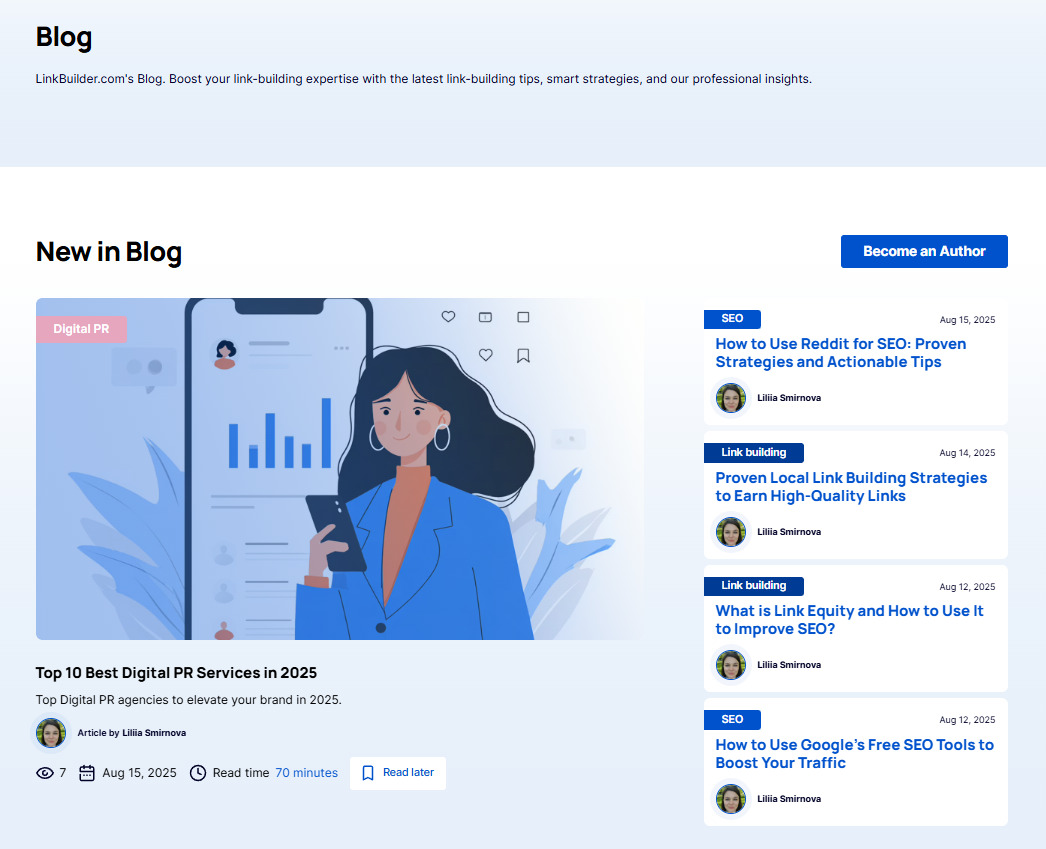
Personal Blog Posts
More personalized content, often reflecting the author’s perspective. These help keep your site fresh and build a community around your brand.
Reviews and Comparisons
Content for users in the decision-making stage, detailing product or service features, pros, and cons.
Guides and Tutorials
Step-by-step guides for “how-to” or “how-to-use” queries. They break complex processes into simple steps and often rank highly in search.
Find such tutorials in our knowledge base.
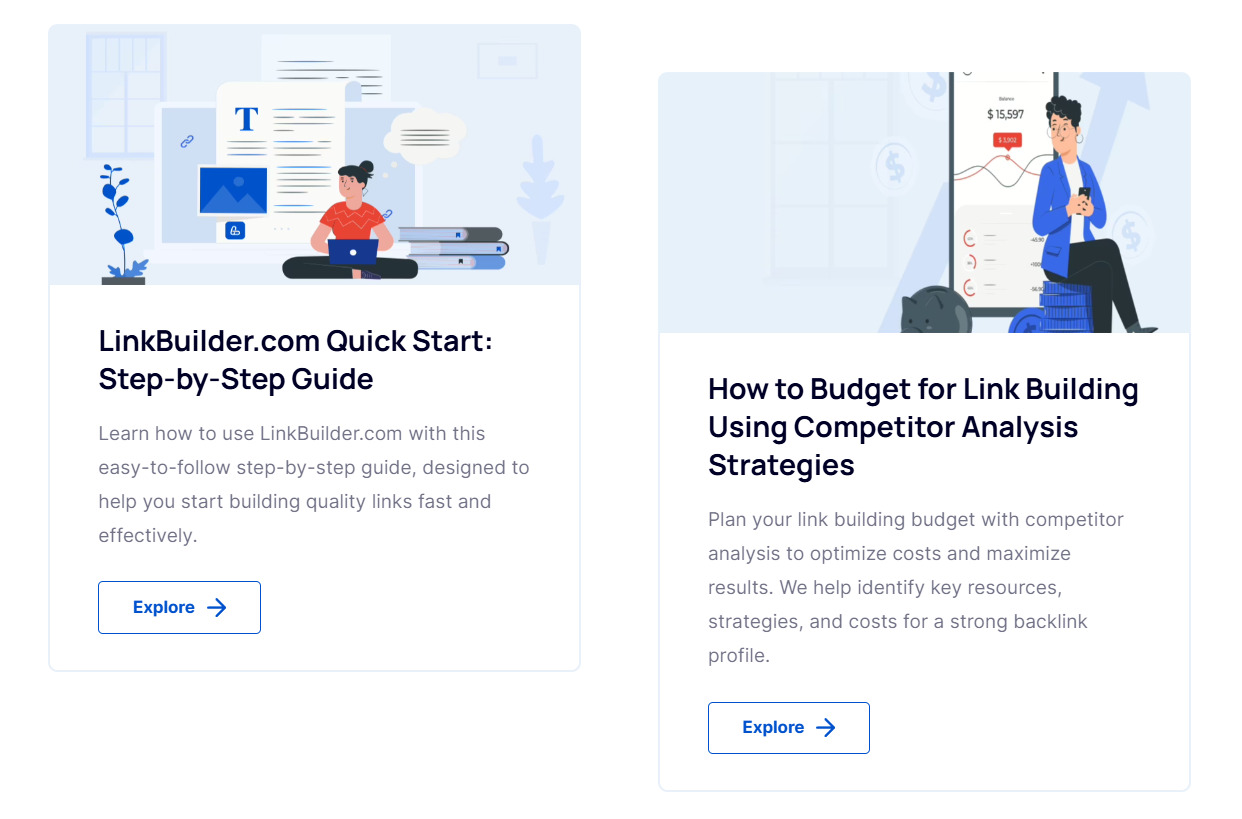
Glossaries and Term Dictionaries
Explain industry-specific terms, capturing long-tail definition queries and enhancing internal linking.
Visual and Interactive Content
Visual content boosts engagement and can significantly improve SEO content when optimized correctly.
Image Optimization
For effective SEO content development with images, you should:
- Use descriptive file names with keywords
- Add alt tags describing the image
- Compress files for faster loading
- Include captions with keywords
Infographics
Visualize complex data or processes. For SEO content meaning, ensure:
- Text descriptions accompany the infographic
- Optimized alt tags and file names
- Break large infographics into mobile-friendly parts
For example, here’s our infographic from the article “How to Create Linkable Assets”.
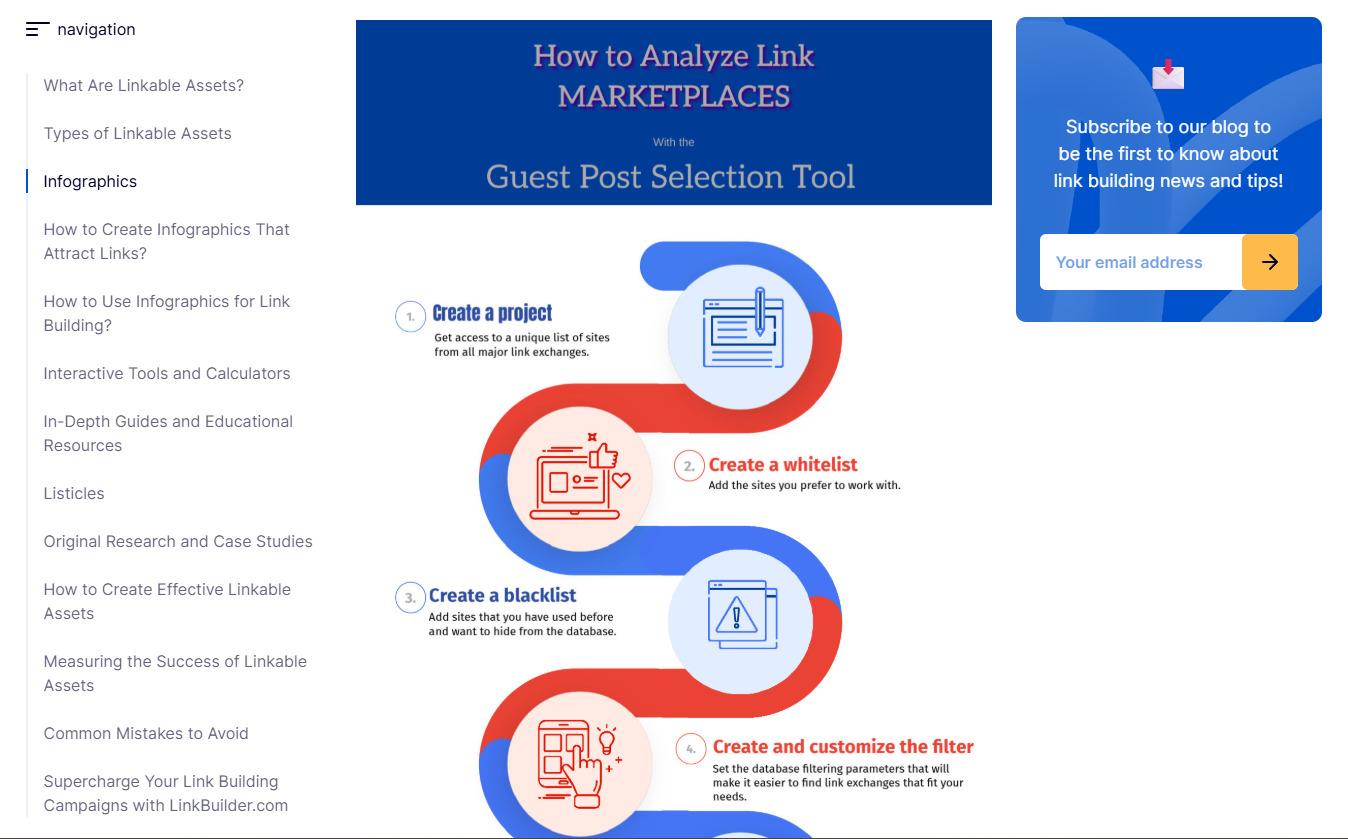
In large studies, include embed codes so other sites can share your infographic with a backlink.
Video Content
Videos increase time on page and conversions. For SEO content for website optimization, videos should:
- Have keyword-rich titles
- Include detailed descriptions
- Provide video transcripts for indexing
- Use timestamps for navigation
- Optimize thumbnails for clicks
Here’s an example video about using the LinkBuilder.com dashboard:
Specialized Formats
FAQ Pages
FAQ pages are highly valuable for SEO content creation because they:
- Answer specific user queries
- Can earn featured snippets
- Improve internal linking
- Address common customer objections
For optimization, structure FAQs with HTML markup and add FAQPage schema. See an example on our SEO services page.
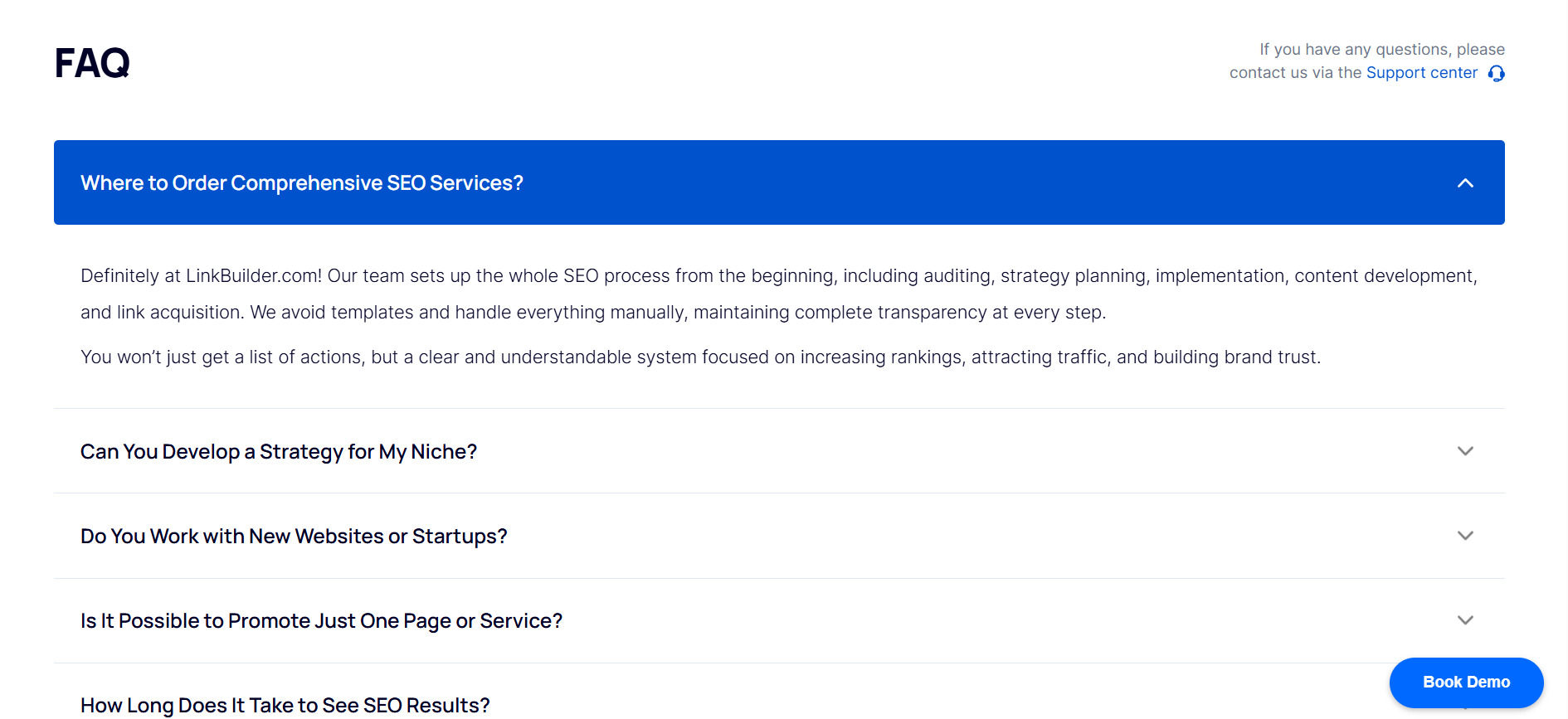
Reviews and Success Stories
Reviews build trust and conversions. From an SEO content perspective, they:
- Include natural keyword usage
- Showcase real-world usage
- Rank for “[product] reviews” queries
- Enhance site E-E-A-T
Case Studies
Detailed case studies demonstrate how your product solves specific problems. They:
- Highlight company expertise
- Include specific data and metrics
- Attract B2B audiences
- Rank for problem-solving queries
Step-by-Step Guide to Creating SEO Content
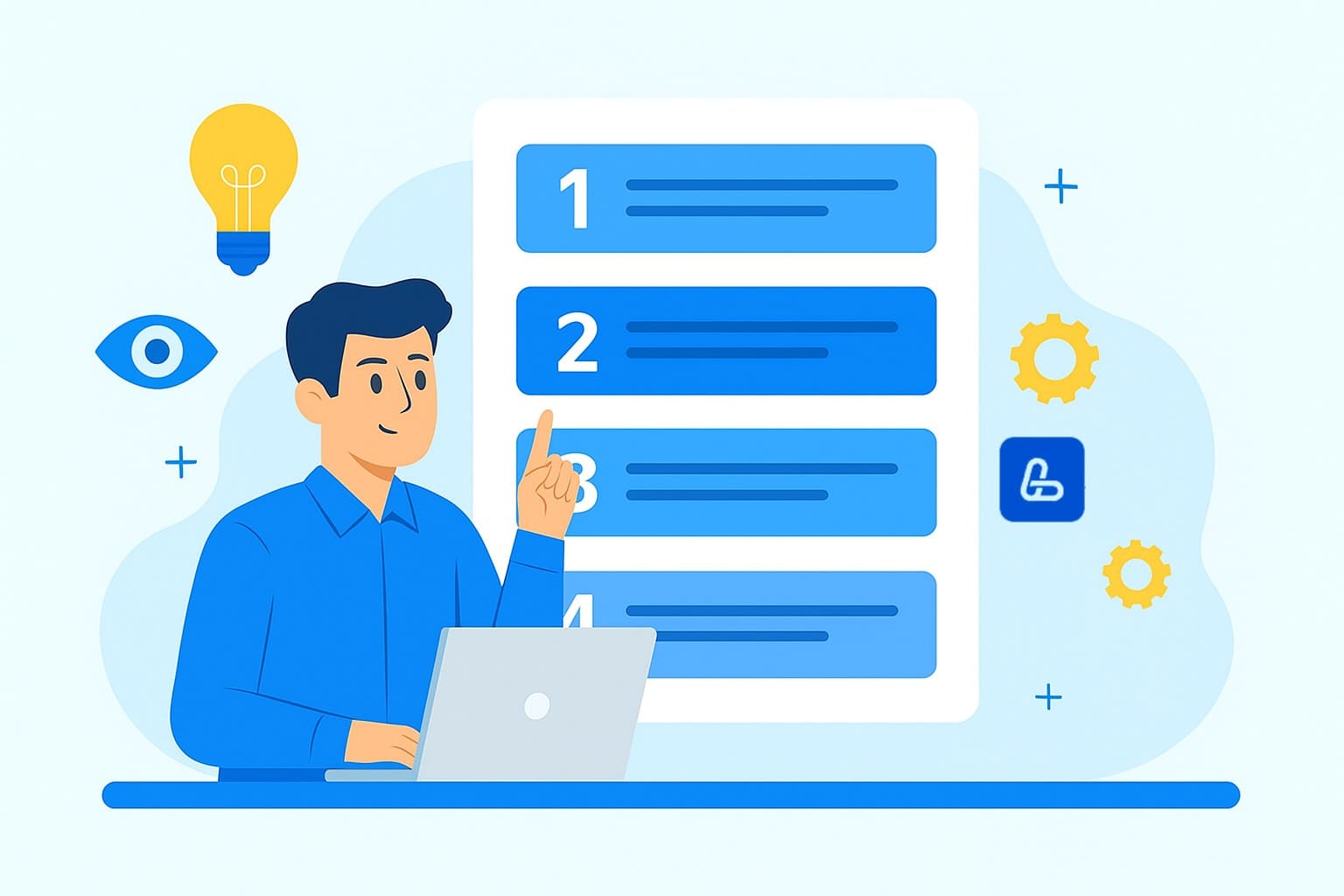
How to create SEO content? This process requires a strategic approach and involves several key steps.
Step 1. Analyze Your Audience and Search Queries
Before creating SEO content, clearly define your target audience. Build audience personas that include:
- Demographics (age, gender, location)
- Professional traits (job role, industry)
- Interests and hobbies
- Problems and tasks your product solves
- Preferred content formats
Why is this important? The better you understand your audience, the more effectively you can tailor content for SEO to their needs. For instance, young entrepreneurs may prefer concise guides with examples, while seasoned professionals might value in-depth analytical articles.
Building a Semantic Core
A semantic core is a set of keywords and phrases users search to find your content. Use tools like:
- Google Keyword Planner – Shows search volume and competition. Available with a Google Ads account.
- AnswerThePublic – Finds questions users ask about your topic.
- Ahrefs Keywords Explorer – Analyzes competitors’ keywords.
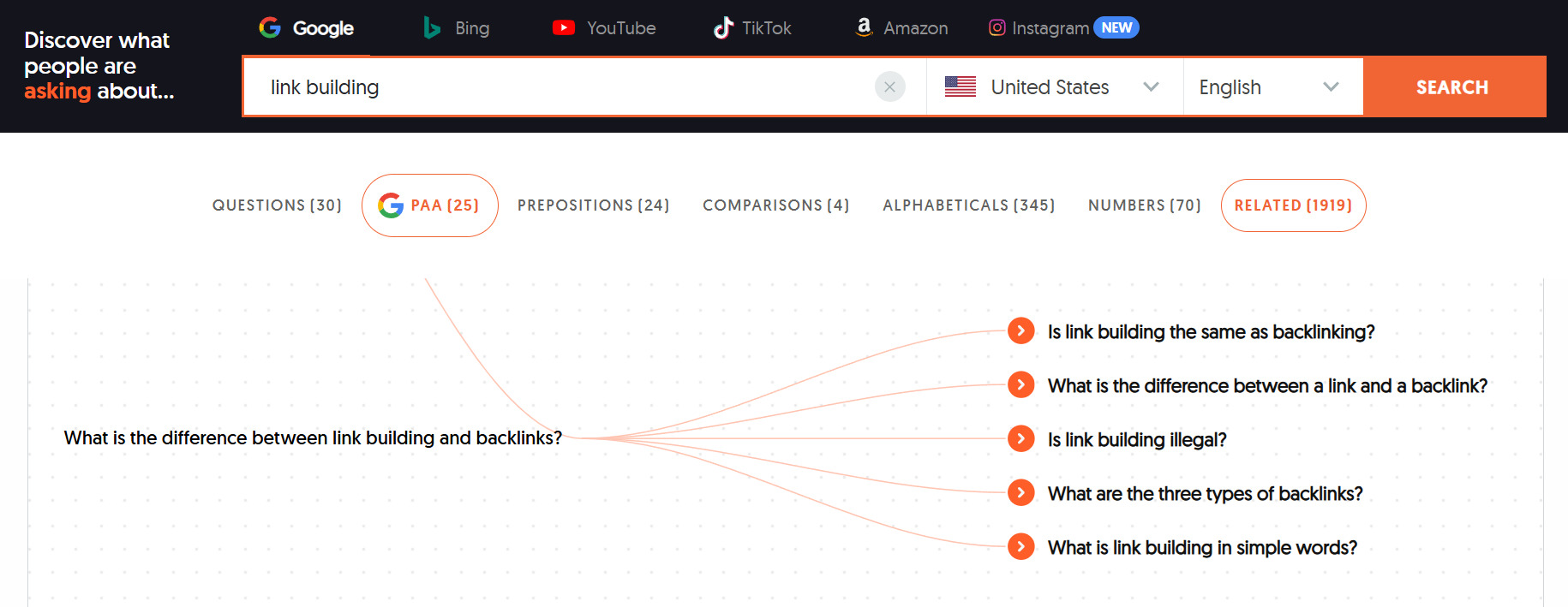
Keyword Selection Criteria:
- Search volume – How many people search the term
- Competition – How hard it is to rank
- Relevance – How well it matches your product
- Seasonality – How search popularity varies over time
Analyzing Search Intent
Search queries fall into four main types based on user intent:
- Informational – Seeking information (“what is SEO,” “how to choose hosting”)
- Navigational – Looking for a specific site (“Facebook login,” “Gmail email”)
- Commercial – Researching products before buying (“iPhone 14 review,” “best laptops 2025”)
- Transactional – Ready to purchase (“buy Samsung Galaxy S25,” “order pizza delivery”)
How to tailor content to different intents?
- Informational – Articles, guides, infographics
- Navigational – Clear site structure and navigation
- Commercial – Reviews, comparisons, rankings
- Transactional – Product pages with clear CTAs
Step 2. Choose Content Format and Structure
After analyzing your audience and keywords, select the optimal format and develop a structure.
Text Content
For textual content in SEO, structure is critical:
- H1 Title – Include the main keyword and grab attention
- Introduction – Briefly explain the content’s purpose and value
- Subheadings (H2, H3) – Organize content and include secondary keywords
- Main Body – Break into short paragraphs (3-5 lines), including:
- Bullet or numbered lists
- Quotes and expert opinions
- Examples and case studies
- Statistics and research
- Conclusion – Summarize key points and include a call-to-action
Additional Elements:
- Table of contents for long-form content
- “Key Takeaways” or “Expert Tips” blocks
- Comparison tables
- Internal links to relevant content
See an example in our well-structured article “Top 10 Digital PR Agencies in 2025” with subheadings, contents, and lists:
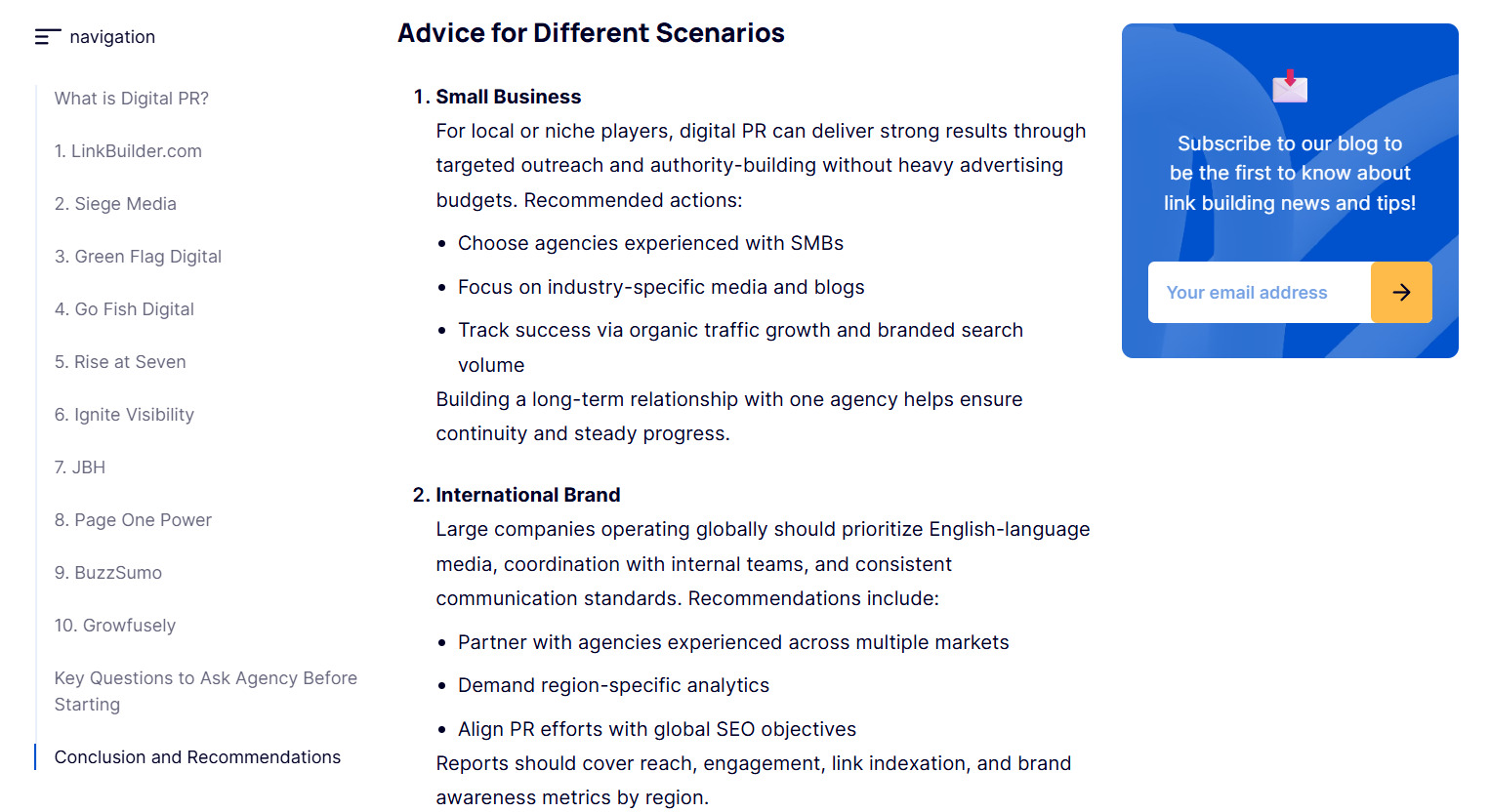
Structure for Different Content Types:
- Landing Pages: Problem → Solution → Benefits → Proof → Offer
- Guides: Introduction → Tools Needed → Step-by-Step Instructions → Troubleshooting → Conclusion
- Reviews: Product Description → Features → Pros and Cons → Comparison with Alternatives → Verdict
Video Content
For SEO content videos, develop:
- Keyword-rich script – Mention main keywords in the first 30 seconds
- Video structure:
- Engaging intro (5-10 seconds)
- Topic introduction (30-60 seconds)
- Segmented main content
- Conclusion with a call-to-action
- Text support:
- Keyword-rich description
- Subtitles for accessibility
- Transcript on the page
Infographics
For infographics, ensure:
- Logical structure – Information flows top-to-bottom, left-to-right
- Text support – Keyword-rich descriptions
- Mobile-friendly design – Clear display on all devices
Step 3. Content Creation and Optimization
Once the format and structure are set, start creating SEO content.
For Text:
- Ensure readability:
- Use short paragraphs (3-5 lines)
- Add subheadings every 300-350 words
- Include bullet or numbered lists
- Highlight key points in bold
- Write in simple, clear language
- Optimize keywords:
- Include the main keyword in the H1 title
- Use secondary keywords in H2 and H3 subheadings
- Add semantically related words (LSI keywords)
- Maintain natural keyword density (2-3% of text)
- Avoid keyword stuffing
- Apply SEO content creation principles:
- Write for humans, not bots
- Fully answer user queries
- Include unique data not found elsewhere
- Use current research and stats
- Make content engaging and useful
Modern Google algorithms (BERT, MUM) analyze context and meaning, not just keywords. Focus on quality over keyword quantity.
Creating effective SEO content can be challenging. You might spend hours on keyword research and editing without achieving desired rankings. That’s why entrusting this task to experts at LinkBuilder.com is a smart move. You can order SEO copywriting and other services to boost your brand.
Why choose LinkBuilder.com:
- In-depth audience and semantic analysis – We don’t just insert keywords; we craft content for SEO tailored to your audience and search intent.
- Proven structures – Content that users read to the end and share.
- Manual refinement – We eliminate fluff, avoid over-optimization, and ensure readability and natural keyword use.
- Proper markup – We add all necessary meta tags for immediate impact post-publication.
Want content that drives customers? Contact us for top search rankings without the hassle.
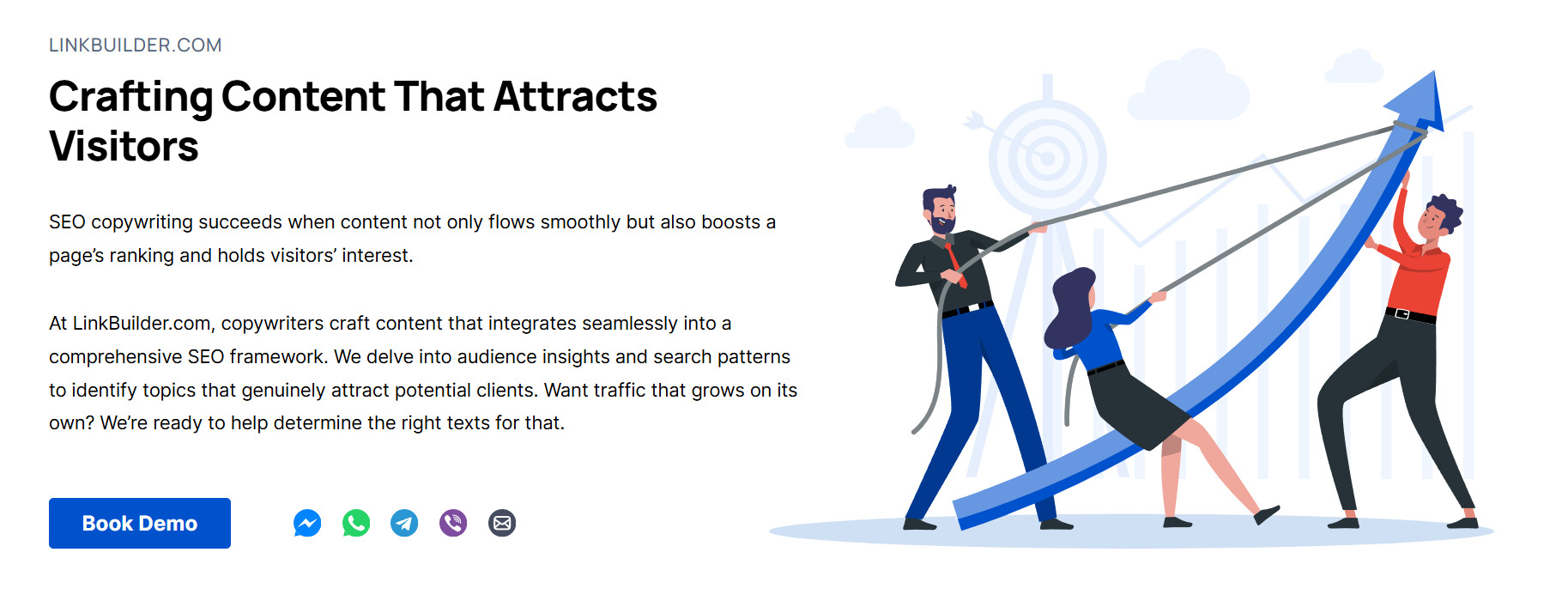
For Video/Audio:
- Optimize metadata:
- Keyword-rich titles
- Descriptions summarizing key points (up to 500 characters)
- Relevant tags (5-10)
- Text support:
- Subtitles
- Page transcript
- Timestamps for long videos
- Optimize thumbnails:
- Bright, high-contrast images
- Minimal, readable text
- Mobile-friendly clarity
For Infographics:
- Optimize files:
- Keyword-rich file names (e.g., “how-seo-works.png” instead of “Screenshot 2025-08-15”)
- Compress without quality loss
- Use SVG for scalability
- Alt text:
- Describe content (e.g., “Infographic: 5 Steps of SEO Website Promotion”)
- Include keywords naturally
- Text support:
- Full textual version of the information
- H2-H3 structured headings
- Keywords in the first 100 words
Step 4. Technical SEO Preparation
Meta Tag Optimization
Every page needs:
- Title (page headline):
- 50-60 characters
- Keyword near the start
- Unique for each page
- Meta Description:
- 150-160 characters
- Call-to-action (“Learn,” “Download,” “Read”)
- Natural keyword inclusion
Schema.org Microdata
This helps secure rich snippets in search results. Common types include:
- Article (for blog posts)
- FAQ (question-answer)
- Product (items with prices)
- HowTo (step-by-step guides)
Use Google’s Rich Results Test to check eligibility for enhanced search results.
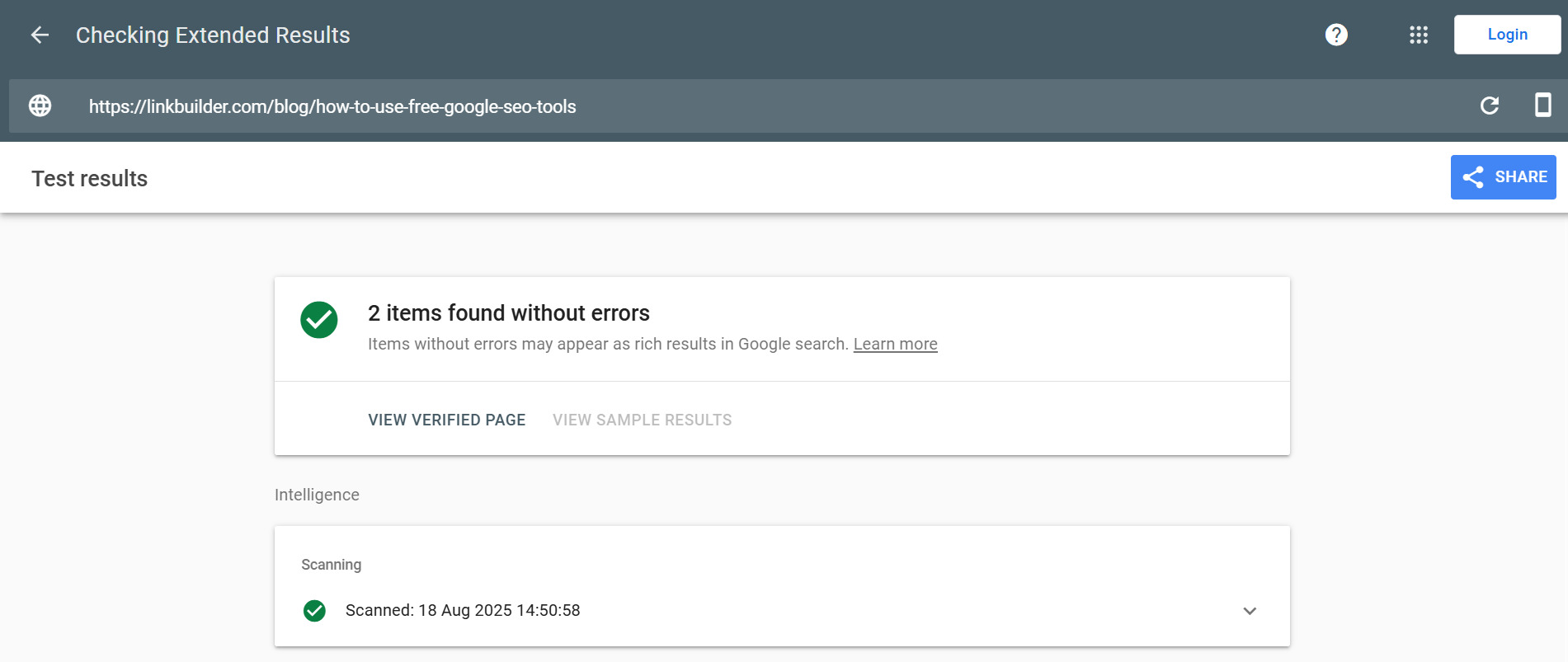
Step 5. Publication and Promotion
- Website Placement
- URL: Short, keyword-rich (e.g., /seo-guide)
- Internal Linking: Add links to relevant pages with keyword-rich anchors (e.g., “learn more about free Google tools”)
- Update Sitemap (sitemap.xml)
- Social Media and Email Promotion
- Social Media: Tailor content to platforms (short videos for TikTok, long posts for LinkedIn), use hashtags and interactive elements (polls, quizzes)
- Email Campaigns: Personalized emails with CTAs (“Read the article,” “Watch the video”)
- Monitoring and Refinement
- Track:
- Rankings (Ahrefs, Serpstat)
- Traffic (Google Analytics)
- Behavioral metrics (time on page, scroll depth)
- Update Content:
- Add fresh data
- Improve structure
- Fix outdated information
- Track:
Optimizing Existing Content for SEO
Optimizing existing content is a powerful way to boost site visibility without creating new material. Effective SEO content development for existing pages involves two key areas: technical optimization and content improvement.
Technical Aspects
Technical factors directly impact how search engines perceive SEO content. Even the best content for SEO won’t perform if users can’t access it due to slow loading or poor mobile compatibility.
Page load speed and mobile adaptability are critical for SEO content creation. Google explicitly considers these in its ranking algorithms. According to a Google study, 53% of users abandon pages that take over 3 seconds to load.
Use tools like Google PageSpeed Insights or GTmetrix to measure load times and get improvement recommendations.
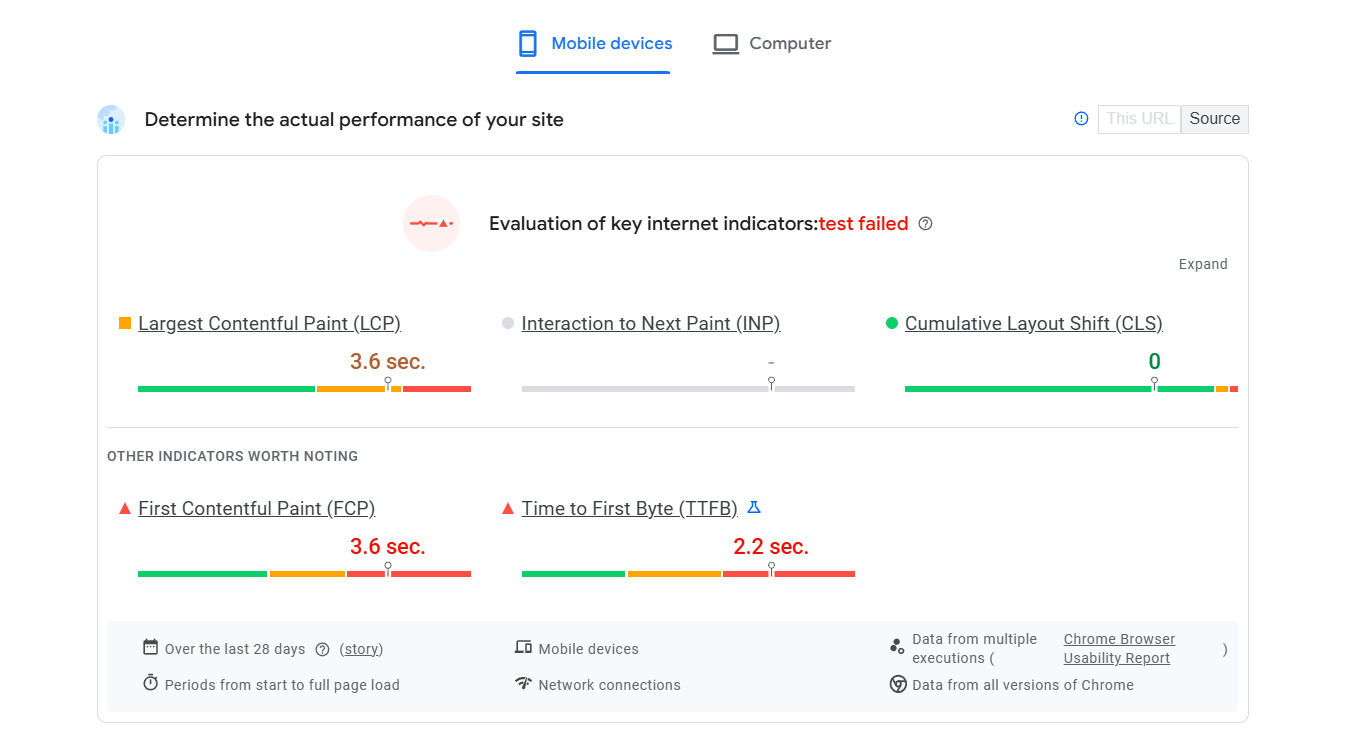
Ways to speed up your site:
- Image Optimization
- Compress without quality loss (use TinyPNG, Squoosh)
- Convert to modern formats (WebP, AVIF)
- Apply lazy loading (loading="lazy") for off-screen images
- Minimize CSS and JavaScript
- Combine and minify files (using Webpack, Gulp)
- Defer JS loading (defer, async)
- Remove unused code (PurgeCSS, Tree Shaking)
- Enable Caching
- Set Cache-Control for static files
- Use Service Workers for PWAs
- Server Optimization
- Choose hosting with SSD and HTTP/2
- Enable GZIP/Brotli compression
- Optimize database (indexes, query caching)
- Use Lightweight Themes and Plugins
- Avoid heavy page builders
- Remove unused plugins
- Optimize fonts (load only necessary weights)
Additional Tips:
- Preload key resources (<link rel="preload">)
- Use Critical CSS for faster rendering
For mobile adaptability, Google uses Mobile-First Indexing, prioritizing your site’s mobile version.
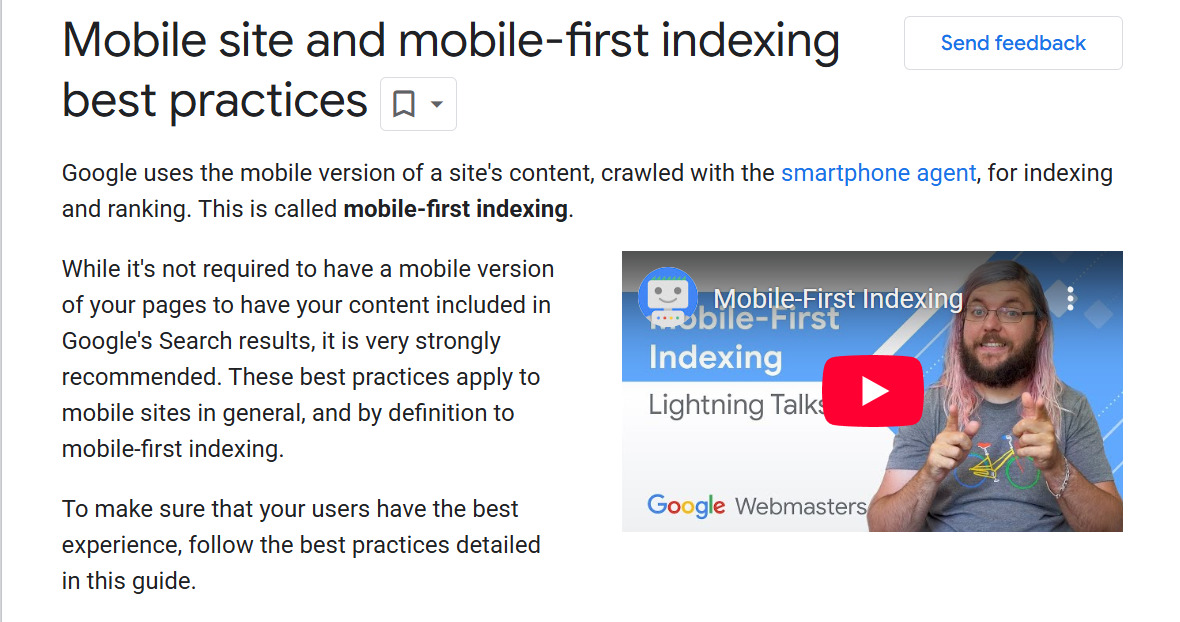
Poor mobile optimization can harm rankings even in desktop search. Ensure your site displays correctly across screens, offers intuitive navigation, and loads quickly on mobile.
Using a CDN and fast hosting is another technical factor impacting speed and SEO content meaning. A Content Delivery Network (CDN) reduces load by serving content from the nearest server, vital for global audiences.
Popular CDN solutions:
- Cloudflare
- Amazon CloudFront
- Google Cloud CDN
- Akamai
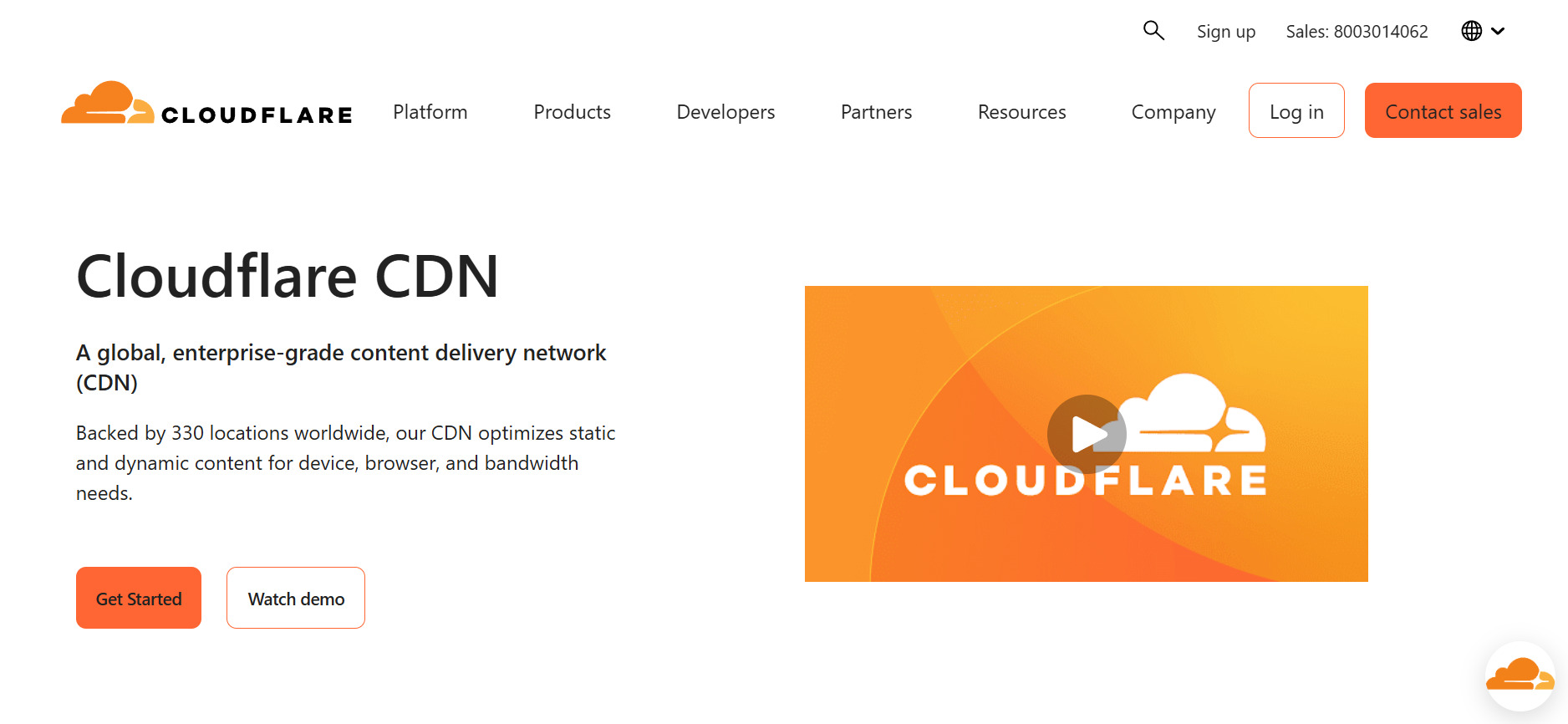
When choosing hosting, consider:
- Server response time (<200 ms)
- Uptime (ideally 99.9%+)
- SSD storage
- Regular backups
Content Improvements

Updating old content is an effective way to improve rankings without starting from scratch. How to create SEO content by optimizing existing materials? Start with an audit to identify articles that:
- Previously drove traffic but lost rankings
- Cover relevant topics but have outdated data
- Have high conversion potential but low engagement
Follow this optimization process:
- Analyze current keywords and add new relevant ones
- Update stats, research, screenshots, and factual data
- Restructure with subheadings, lists, and tables
- Enhance media (images, videos, infographics)
- Strengthen internal linking to newer content
- Refresh meta tags (title, description)
Avoid changing URLs unless necessary, as this can reset accumulated SEO value.
Best Practices for Creating SEO Content
Content Strategies for Sales Funnel Stages
The best content for SEO involves tailoring materials to specific stages of the customer journey. Here’s how to create SEO content for each funnel stage, using our site as an example.
ToFu (Top of the Funnel) – Awareness stage. Users recognize a problem but aren’t yet aware of solutions.
Effective ToFu formats:
- Educational articles and guides
- Industry research and reviews
- Checklists and templates
- Webinars and online courses
ToFu content addresses broad questions and common pain points. Examples: “What is SEO?”, “Internet Marketing Basics,” “Proven Local Link Building Strategies to Earn High-Quality Links”.
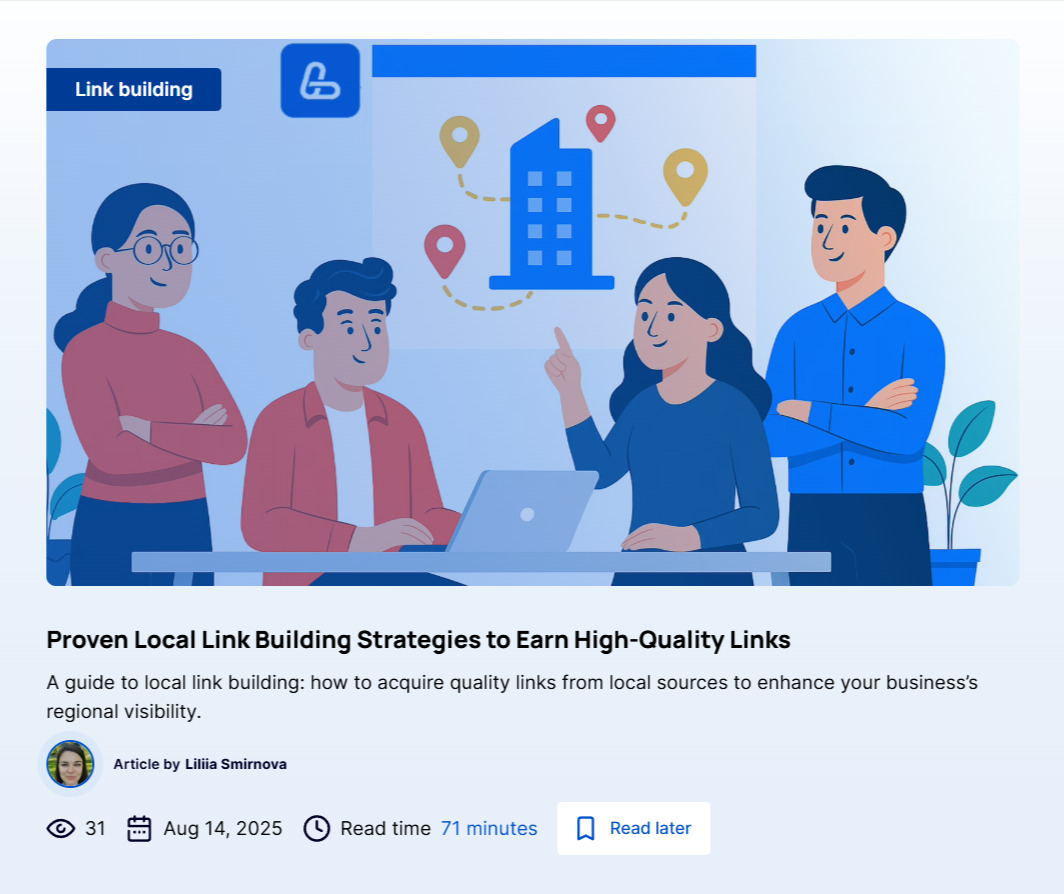
MoFu (Middle of the Funnel) – Consideration stage. Users know their problem and explore solutions.
Effective MoFu formats:
- Product/service comparison reviews
- Detailed case studies
- Expert interviews
- Solution selection guides
Examples: “SEO vs PPC: What’s Better for Your Business,” “5 Criteria for Evaluating Optimization Quality,” “LinkBuilder.com vs LinkDetective.pro Comparison”.
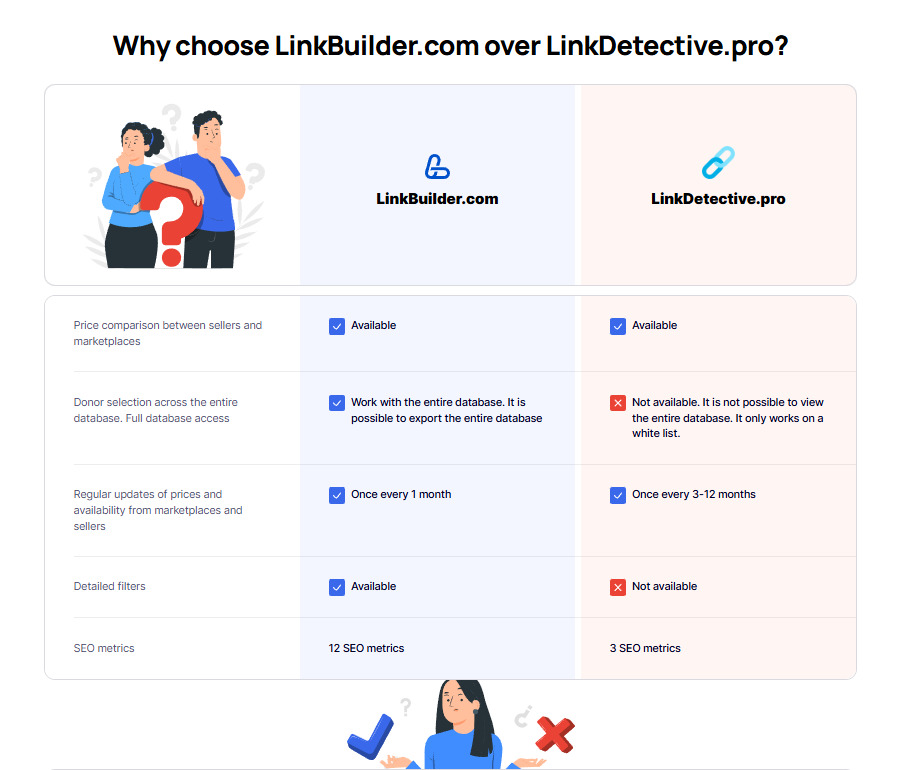
BoFu (Bottom of the Funnel) – Decision stage. Users have chosen a solution type and are selecting a provider.
Effective BoFu formats:
- Detailed product/service descriptions
- Client reviews and success stories
- Product demos
- FAQs on product usage
- Transparent pricing
Examples: “Client Reviews of Working with Us,” “How We Boosted Company X’s Organic Traffic by 200%,” “SEO Services Pricing”.
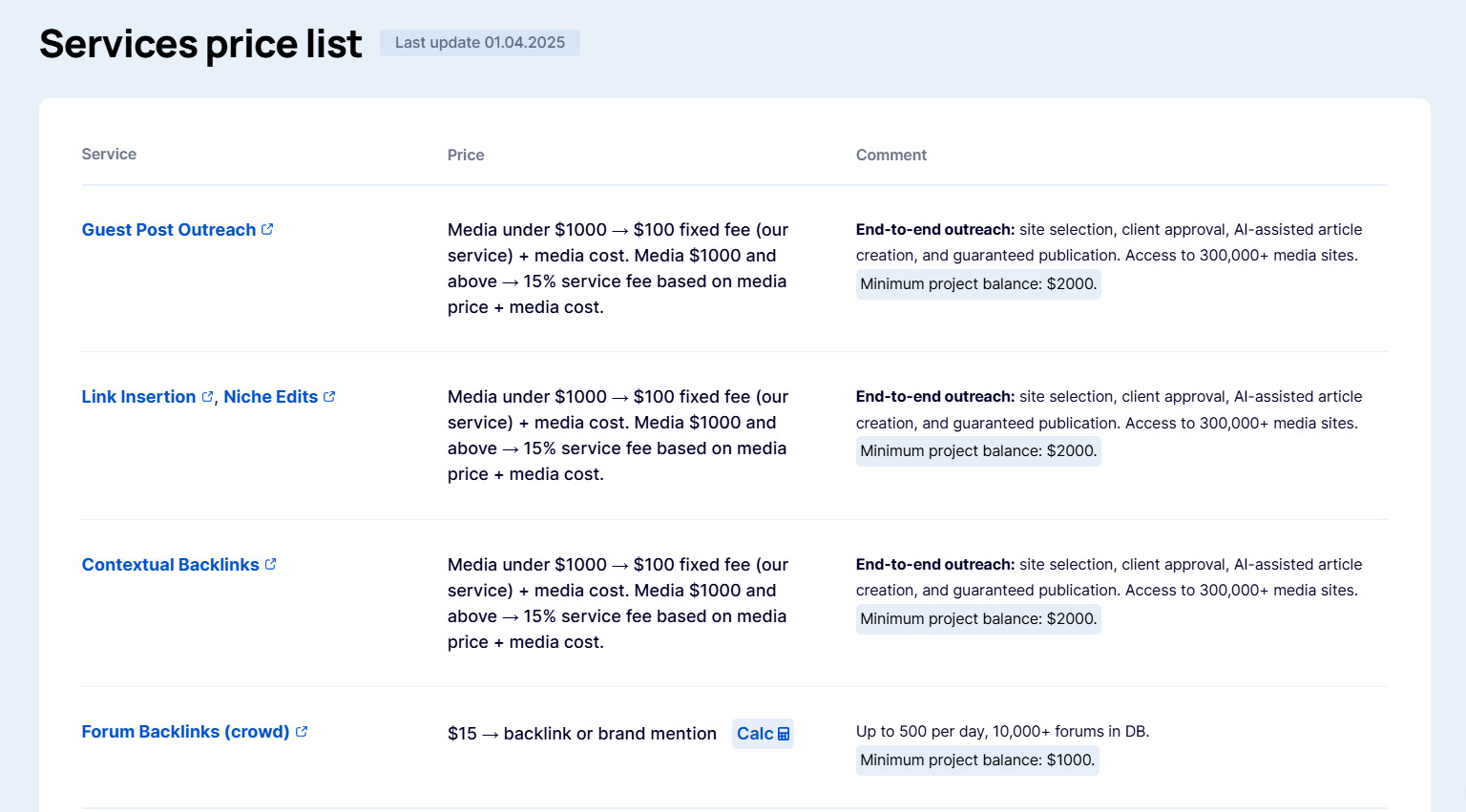
Link content across funnel stages with internal linking to guide users smoothly from awareness to purchase.
Leveraging User Signals
Search engines increasingly prioritize behavioral factors for rankings. How to create SEO content that boosts these signals?
Reducing bounce rates is key. High bounce rates (when users leave after viewing one page) may indicate content doesn’t meet expectations.
Ways to lower bounce rates:
- Write compelling, informative intros
- Ensure titles accurately reflect content
- Use subheadings for structure
- Add visuals (images, videos, infographics)
- Improve site navigation and internal linking
Increasing time on page signals valuable content to search engines.
Methods to increase time on page:
- Create in-depth, comprehensive content
- Add interactive elements (quizzes, calculators, polls)
- Include engaging videos
- Use real-world examples and stories
- Incorporate gamification elements
Track user signals with Google Analytics, focusing on:
- Average session duration
- Pages per session
- Bounce rate
- Engagement rate
- Click heatmaps
Using SEO Tools
Professional SEO content development relies on specialized tools for everything from keyword research to performance analysis.
Competitor Analysis helps identify what works in your niche. Tools like Ahrefs and Semrush let you analyze:
- Keywords driving competitor traffic
- Pages earning the most backlinks
- Topics resonating with audiences
- Content formats used by industry leaders
Ahrefs offers Site Explorer and Content Explorer for detailed competitor analysis, revealing top-performing pages and topics to cover.

Semrush provides Domain Overview and Topic Research to assess competitor strategies and identify content gaps.
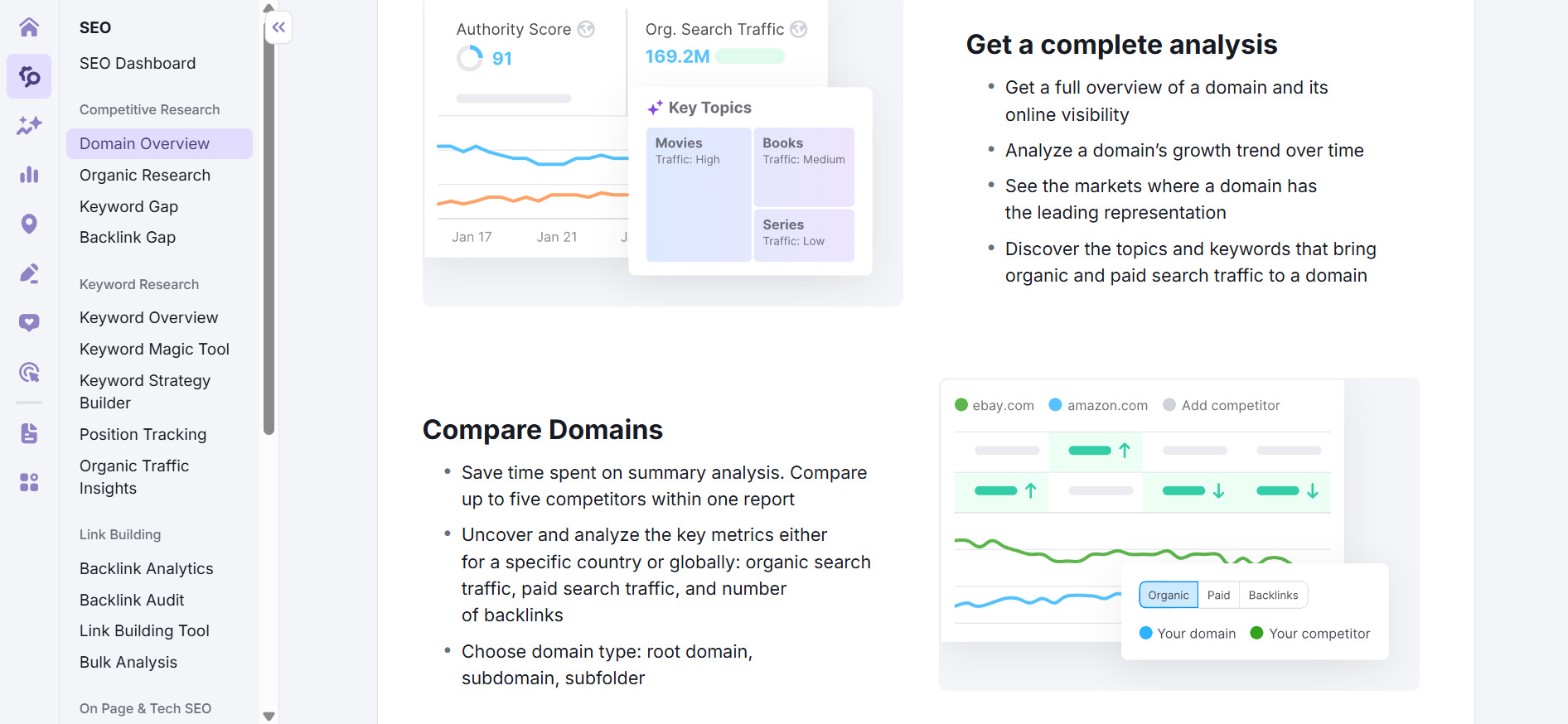
LinkBuilder.com’s Free Guest Post Website Audit analyzes sites for paid post opportunities, including:
- Link Sales Check
- Identifies if a site offers paid posts (PR articles, sponsored content)
- Confirms backlink purchase options
- Placement Cost Analysis
- Estimates guest post pricing
- Compares offers across link exchanges
- Donor Quality Evaluation
- Checks domain metrics (DR, DA, trust) via Ahrefs, Moz integration
- Analyzes traffic sources (organic, referral, social)
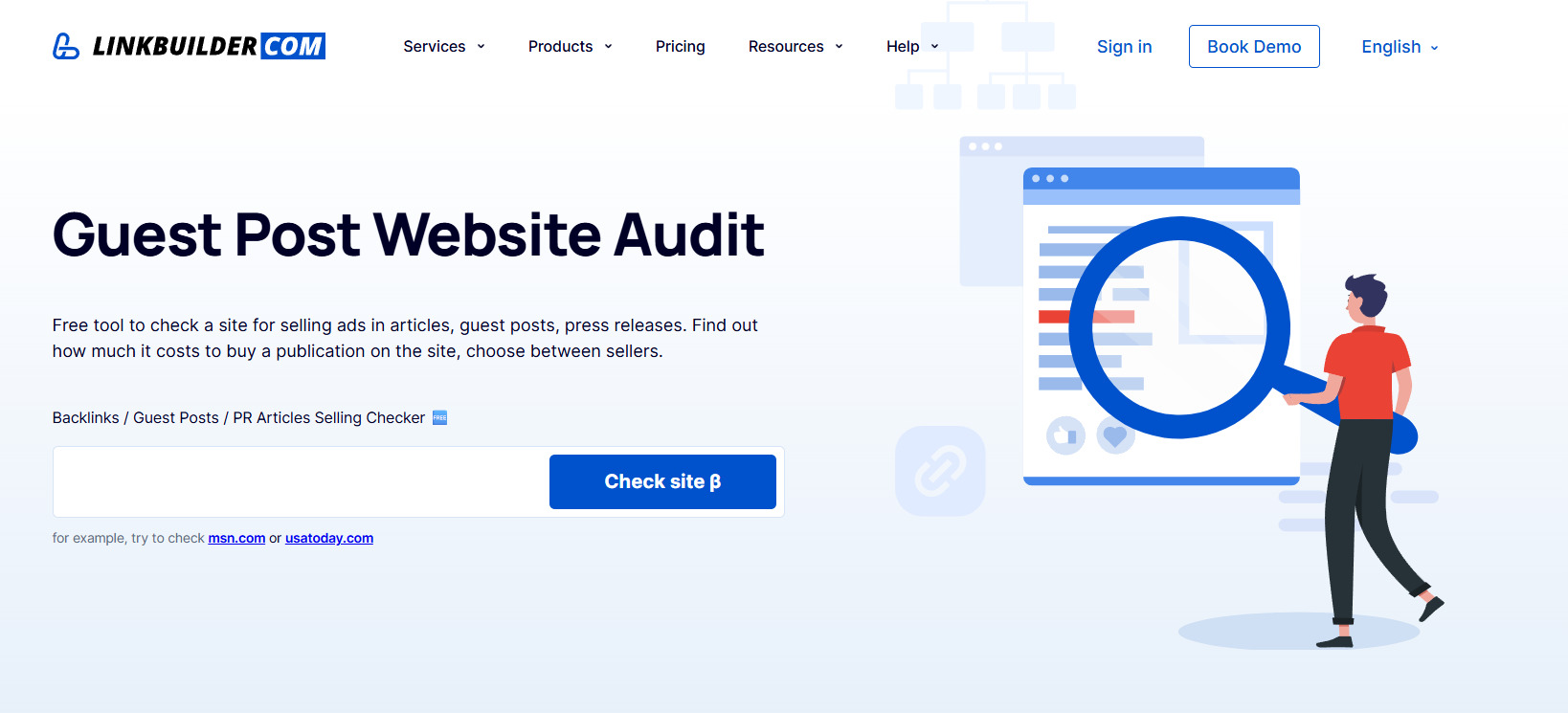
LinkBuilder.com’s Guest Post Scanner finds sites accepting guest posts with link placement opportunities. It analyzes competitor backlinks or site lists, identifying quality donors for natural link profiles, saving time by filtering out spammy or banned sites.
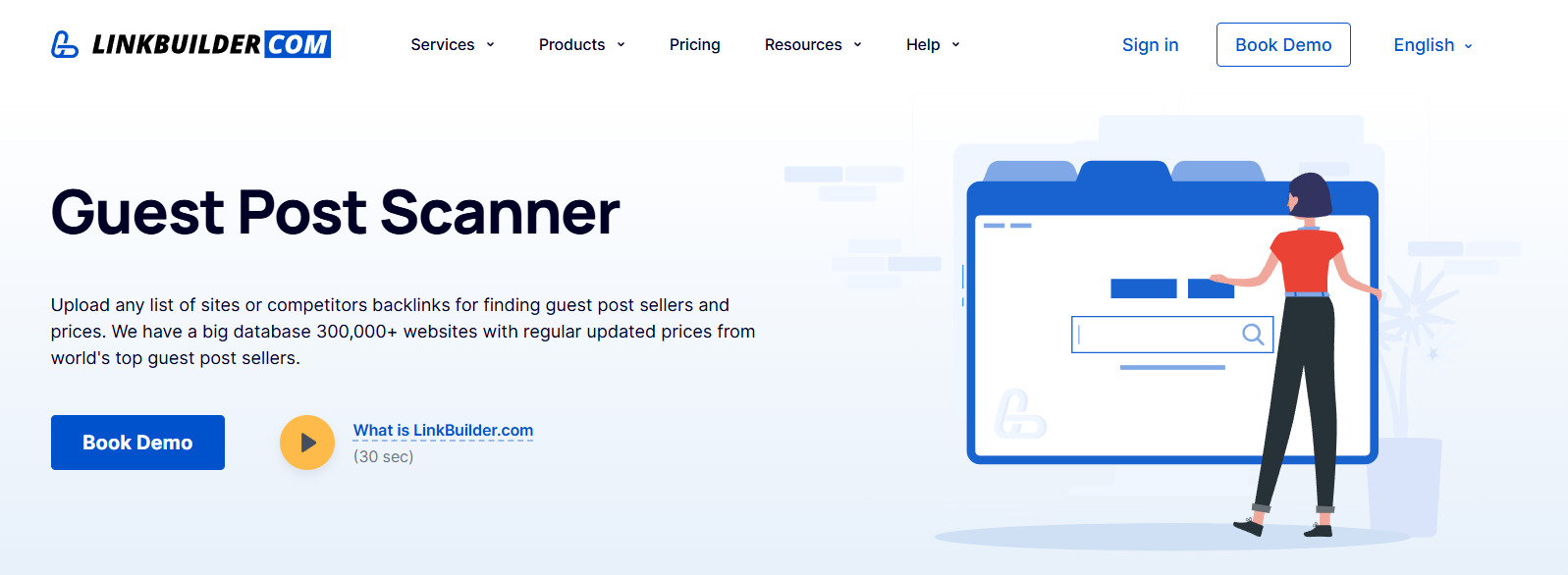
Text Analysis is essential before publishing SEO optimized content. Use:
- Yoast SEO – Checks readability, keyword density, and meta tags in WordPress
- Surfer SEO – Optimizes based on top-performing pages
- Clearscope – Assesses content relevance and suggests key terms
- Frase – Analyzes SERP and builds content plans
- Ahrefs Content Helper – Offers keyword and competitor insights
- MarketMuse – Evaluates topic depth and suggests improvements
- SEO Scout Textalyzer – Analyzes keyword density and readability
These tools ensure SEO content meets requirements, improves structure, and boosts ranking potential.
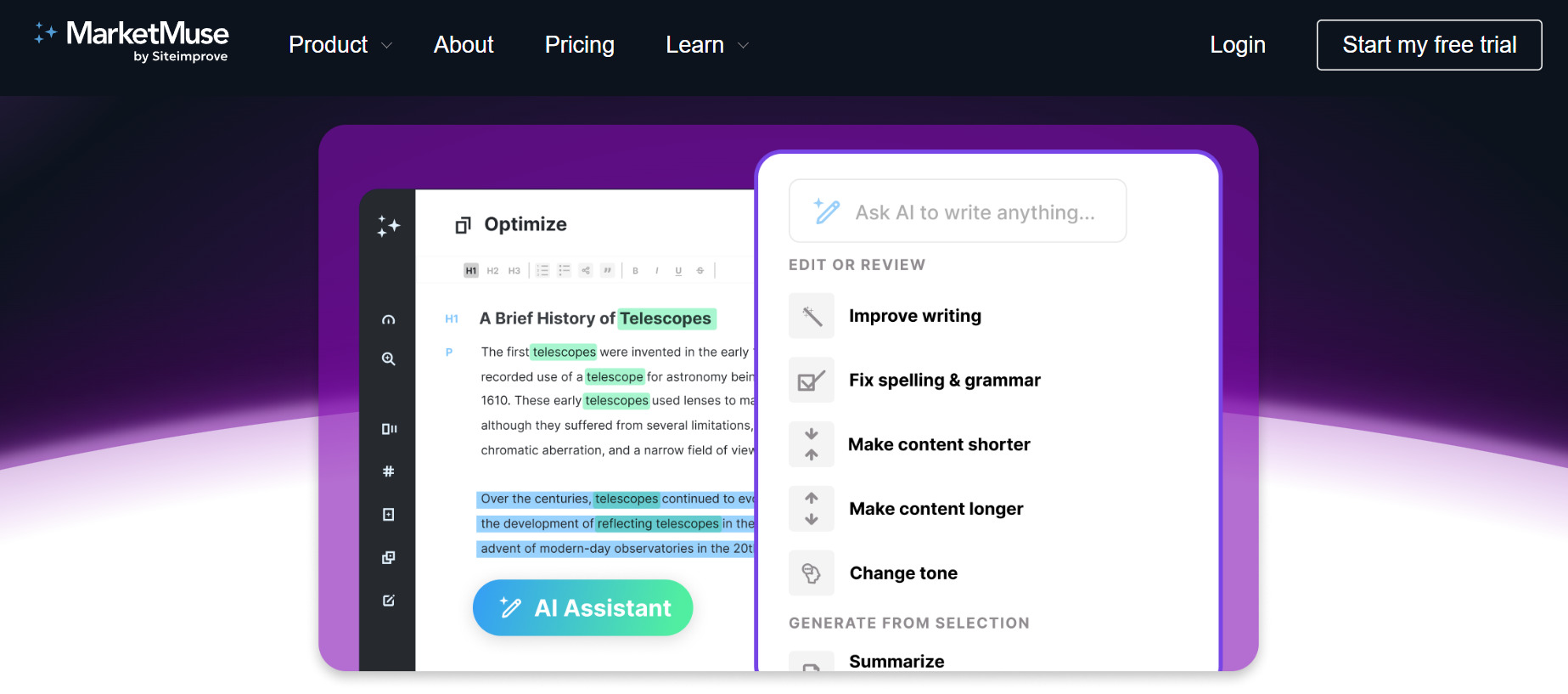
LinkBuilder.com’s SEO Cost Calculator estimates SEO service costs based on competitor link data, aiding budget planning for businesses and marketers. It’s free and requires no registration.

A/B Testing and Content Updates
A/B Testing helps identify the most effective content variations by comparing user responses. It’s a key part of creating SEO content for maximum impact.
How to test titles and CTAs:
- Formulate a hypothesis (e.g., “Titles with numbers get more clicks”)
- Create two versions (A and B) differing only in the tested element
- Split traffic evenly
- Define success metrics (CTR, conversion, time on page)
- Run the test for a statistically significant period
- Analyze and select the winner
Test title variations like:
- Questions vs. statements
- With numbers vs. without
- Emotional vs. informational
- Short vs. long
For CTAs, test:
- Button text (“Download Free” vs. “Get the Guide”)
- Button color and size
- Placement on the page
- Context (e.g., with or without social proof)
Regular Content Update Plan keeps SEO website content fresh. Create a schedule based on:
- Query seasonality
- Industry change pace
- Content performance metrics
- Search algorithm updates
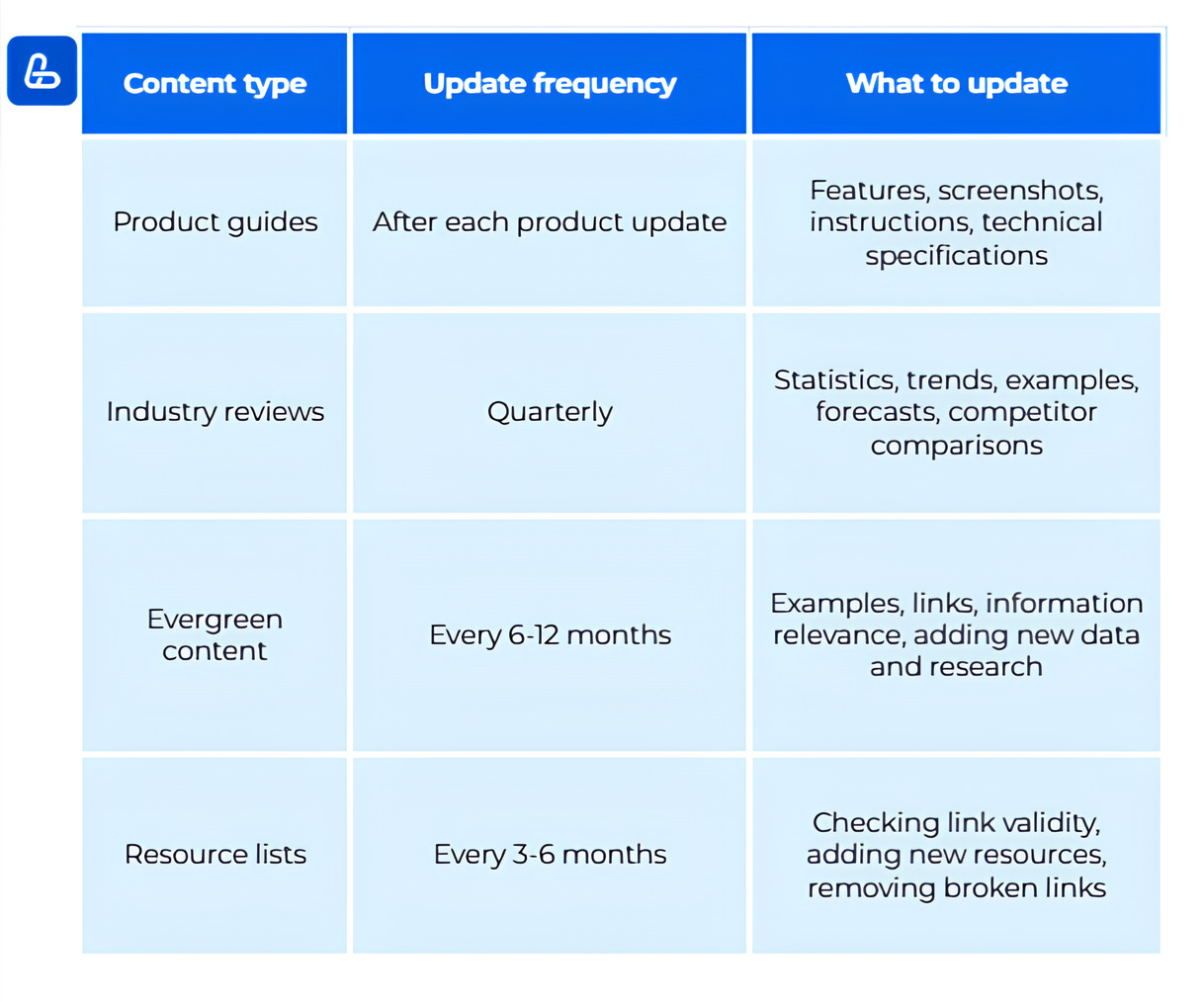
When updating:
- Keep the original URL
- Update the publication date for significant changes
- Note updates for users
- Reindex via Google Search Console
Regular testing and updates are critical for a long-term SEO content strategy, ensuring sustained relevance and effectiveness.
Common Mistakes in Creating SEO Content

Text-Related Errors
Keyword stuffing is a classic mistake. Overloading text with keywords harms readability and risks search engine penalties.
Signs of keyword stuffing:
- Unnatural phrases
- Repeated keywords in adjacent sentences
- Irrelevant keywords
- Hidden keyword text
Instead of focusing on keyword density, use LSI keywords and natural phrasing. Modern algorithms understand context and synonyms.

Overly wordy or complex text is another issue. Wordiness includes meaningless phrases, while complexity stems from long sentences or niche jargon.
How to fix:
- Break long sentences into shorter ones
- Replace complex terms with simpler alternatives
- Illustrate concepts with examples
SEO content creation shouldn’t compromise user experience. Text must be clear and valuable for readers first, not just search bots.
Technical Missteps
Duplicate meta tags confuse search engines and dilute page relevance. Identical titles and descriptions across pages make it hard for search engines to prioritize.
Avoid this by:
- Creating unique meta tags for each page
- Including the main keyword in titles
- Writing compelling descriptions to drive clicks
- Checking for duplicates with tools like Screaming Frog
Unoptimized URLs also harm SEO content. Good URLs are short, descriptive, and keyword-rich.

URL optimization tips:
- Use keywords reflecting page content
- Separate words with hyphens, not underscores
- Avoid parameters or session IDs
- Keep URLs concise
These technical aspects are critical for how to create SEO content that maximizes results.
Multimedia Issues
Images without alt attributes miss opportunities for image search traffic. Alt text describes images for search engines and visually impaired users.
Effective alt text rules:
- Describe the image accurately
- Include relevant keywords naturally
- Keep it concise (<125 characters)
- Avoid phrases like “image” or “picture”
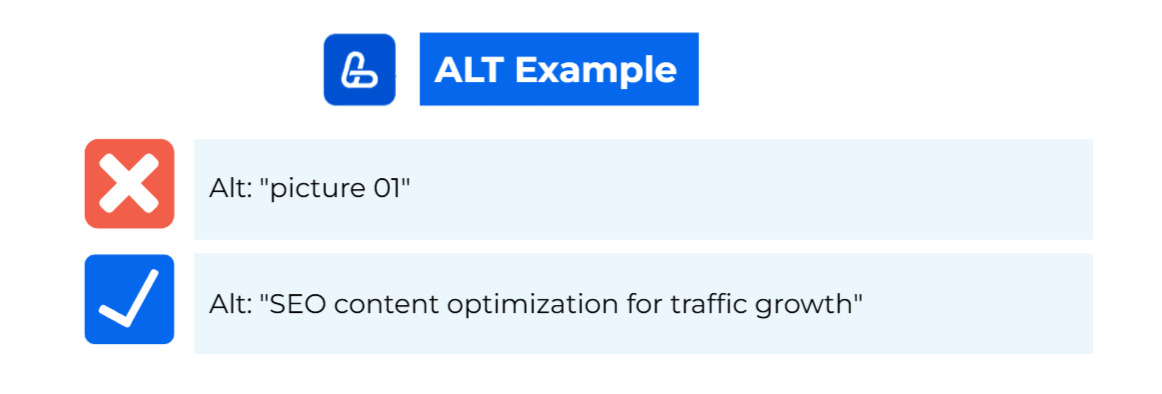
Videos without transcripts lose indexing potential. Transcripts:
- Improve accessibility for hearing-impaired users
- Add indexable text
- Increase time on page
- Help users find specific information
How to add transcripts:
- Place full text below the video or on a separate tab
- Structure with headings and lists
- Include timestamps for navigation
- Optimize with keywords
Ignoring User Experience
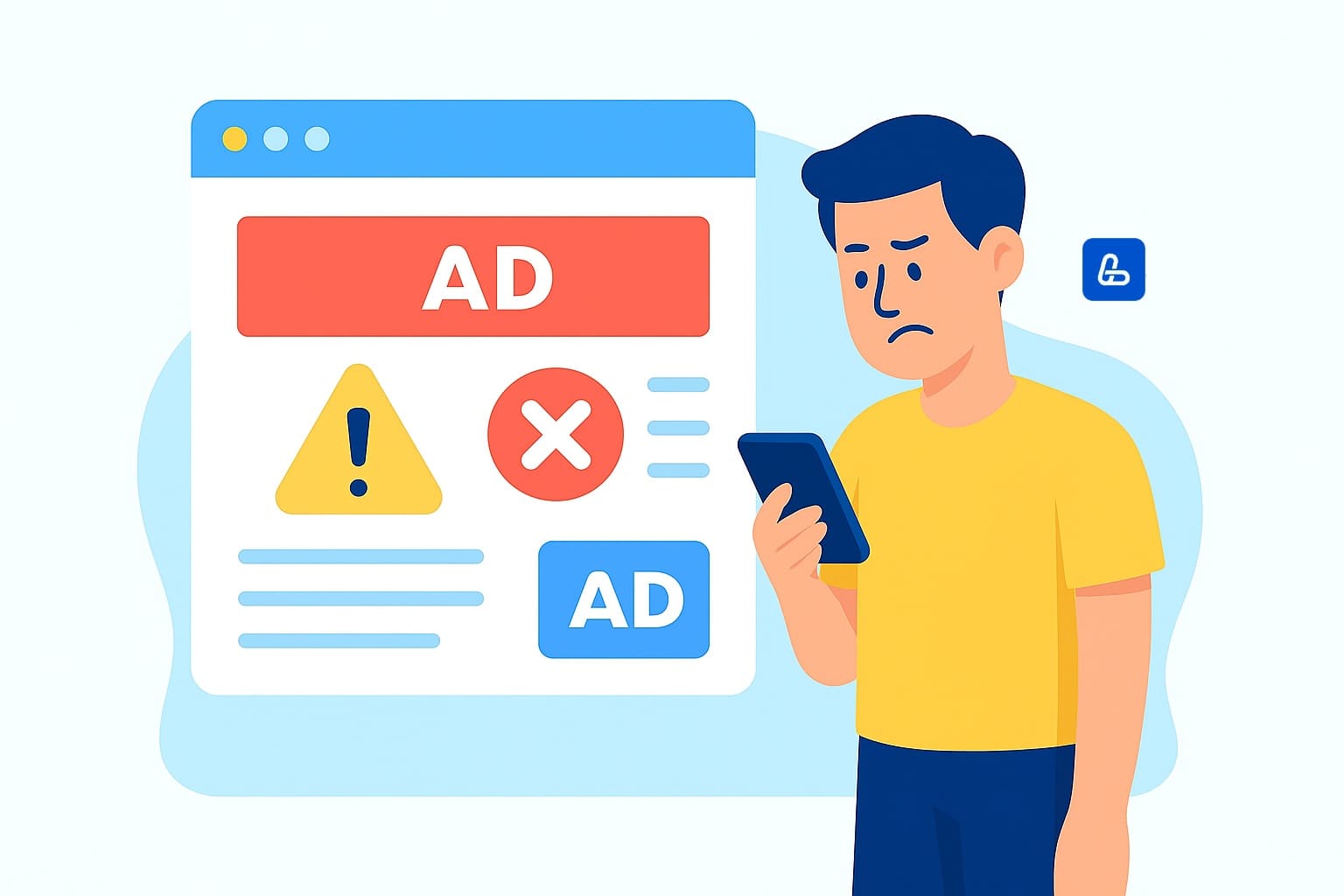
Aggressive ads can degrade user experience and hurt behavioral metrics. Google penalizes sites with excessive ads, especially above the fold.
Signs of excessive ads:
- Pop-ups blocking content
- Auto-playing video ads with sound
- Ads dominating mobile screens
- Multiple distracting banners
Best ad practices:
- Limit ad quantity
- Place ads to avoid disrupting reading
- Use native ads aligned with content
- Prioritize relevant contextual ads
Lack of mobile optimization is a critical error, given Google’s Mobile-First Indexing.
Mobile optimization requirements:
- Responsive design for all screen sizes
- Readable text without zooming
- Ample space between interactive elements
- Fast loading on mobile
- No Flash or incompatible tech
Poor mobile UX, like tiny text or hard-to-find buttons, hurts SEO content for website.
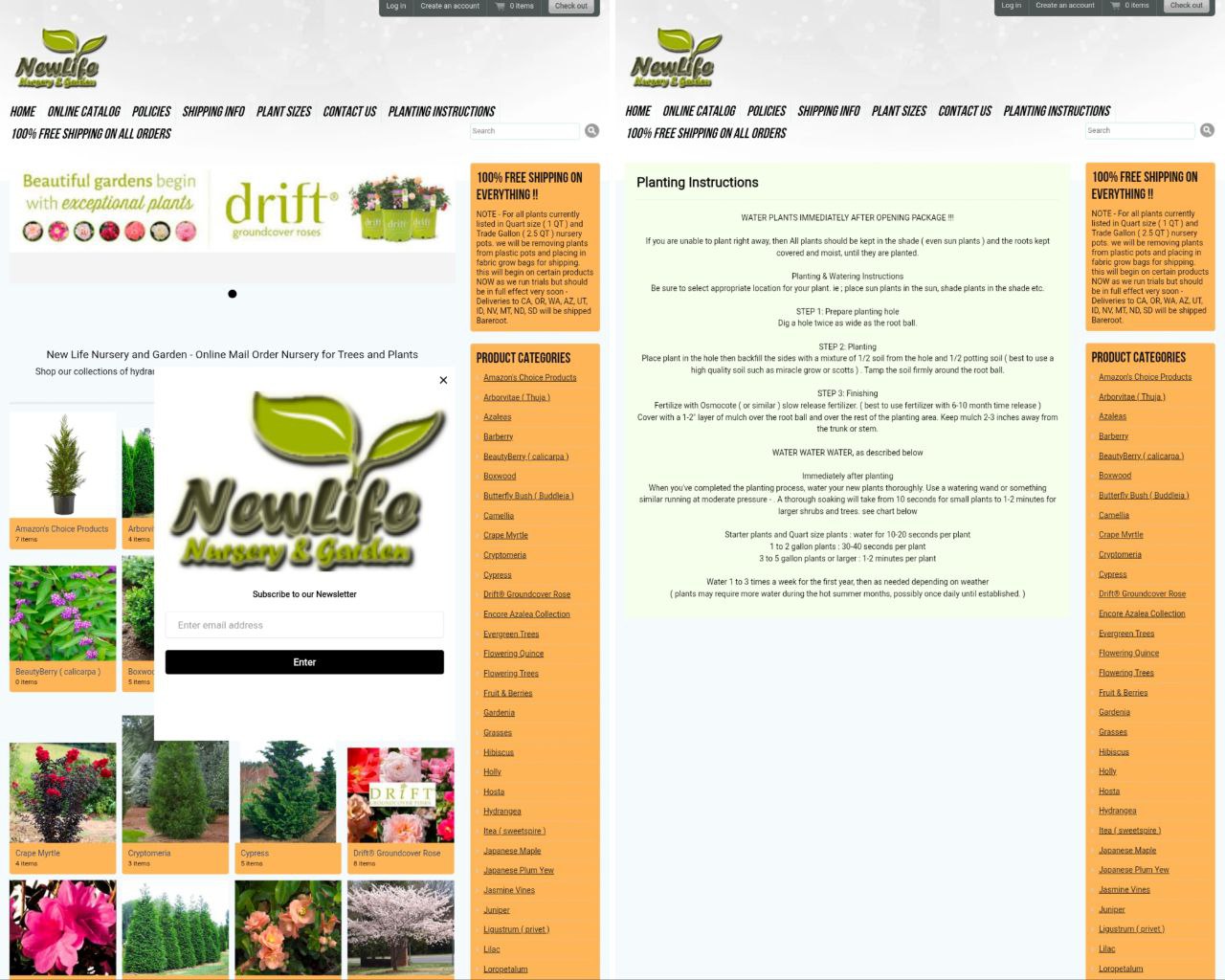
Underestimating Analytics
Failing to track rankings deprives you of insights into SEO content performance. Without monitoring, you can’t:
- Assess optimization effectiveness
- Identify underperforming pages
- Spot new opportunities
- Track algorithm update impacts
Tools for tracking rankings:
- Semrush Position Tracking
- Ahrefs Rank Tracker
- Serpstat
- Google Search Console
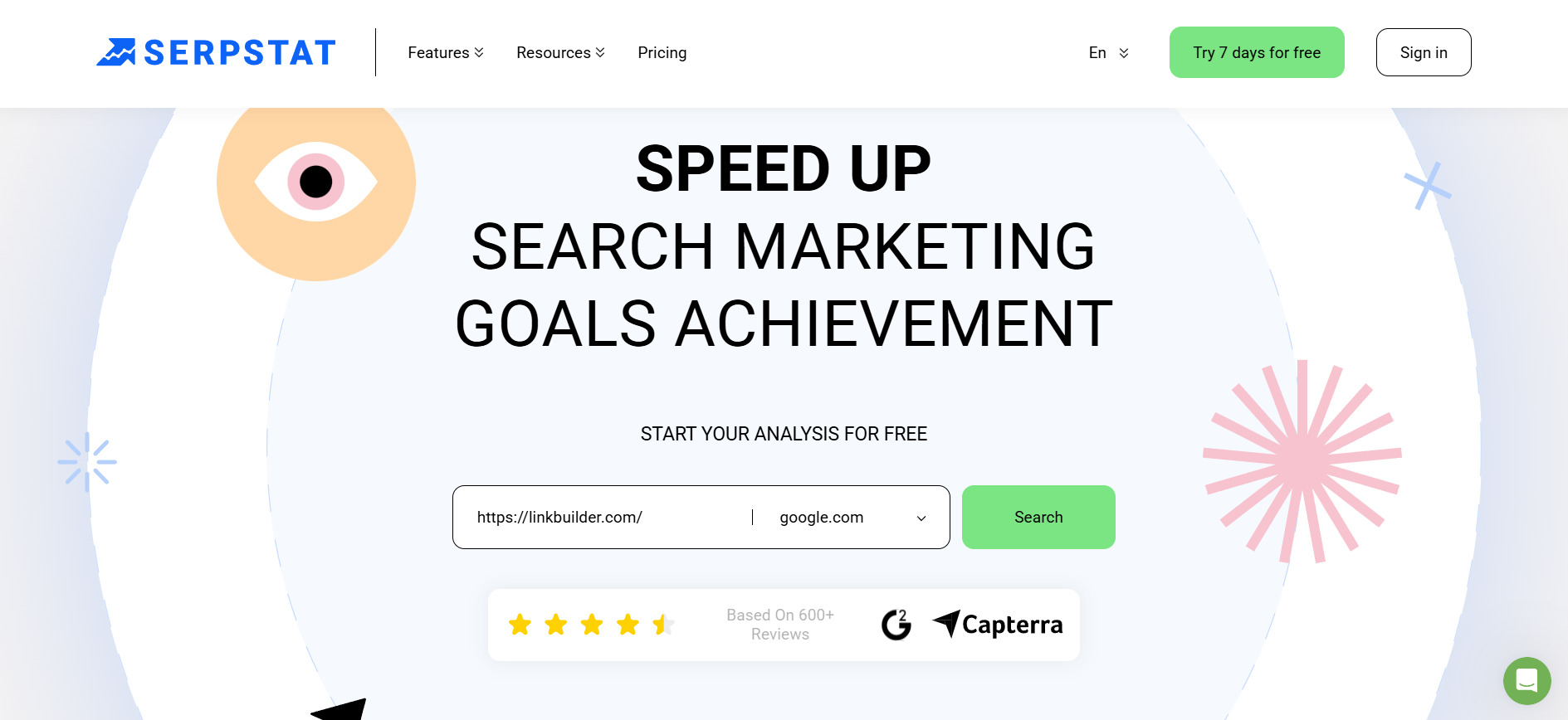
Key metrics to monitor:
- Time on page
- Pages per session
- Bounce rate
- Conversions
- Traffic sources
- User behavior
Regular analysis helps identify issues and opportunities for SEO content development.
SEO Content Creation Services
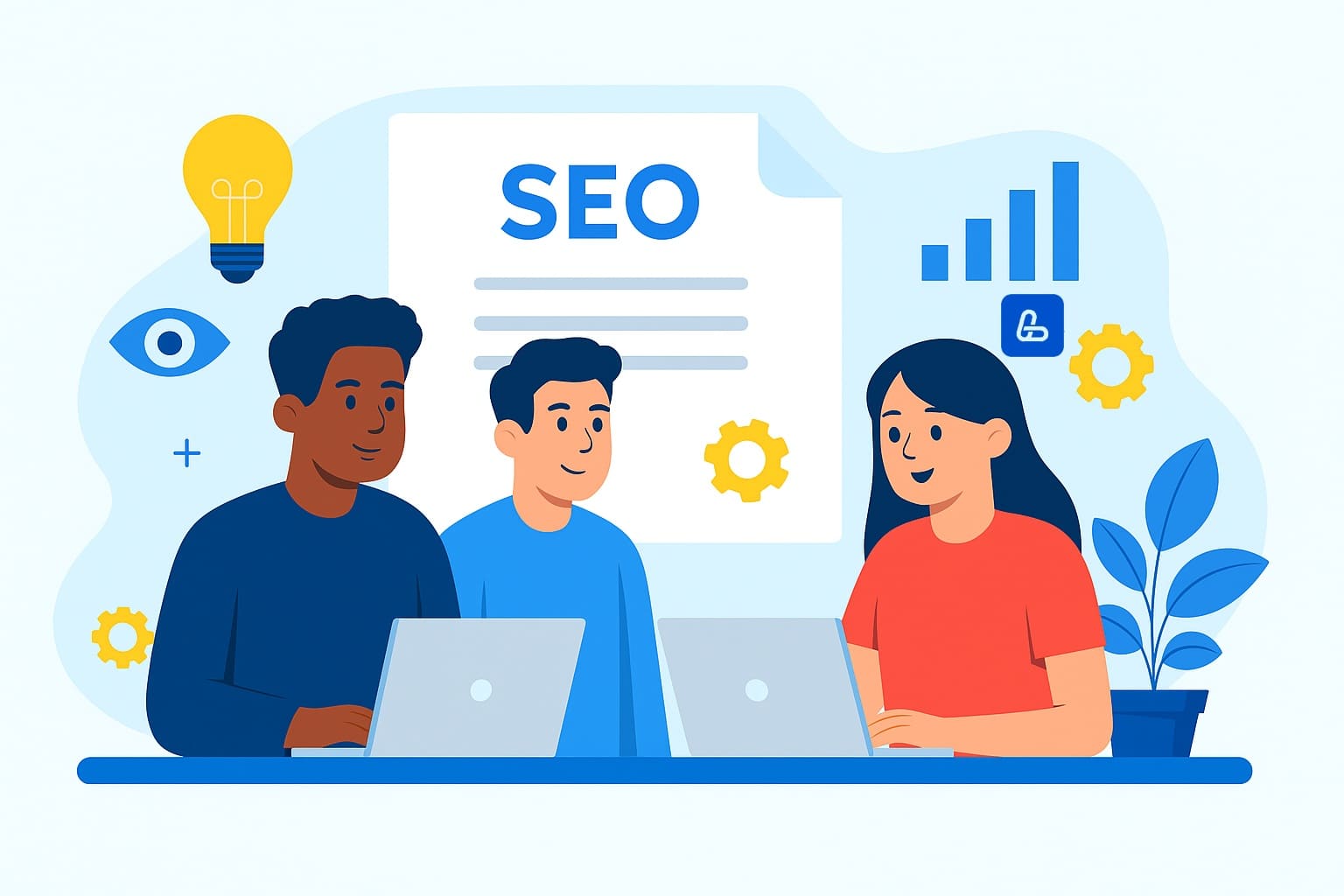
When to Order SEO Content
Hiring SEO content services makes sense in several scenarios:
- Lack of in-house expertise. If your team lacks SEO content creation and copywriting skills, professionals can deliver quality you can’t achieve alone.
- Time constraints. Creating SEO content is time-intensive, from keyword research to optimization. Outsourcing frees you to focus on core business.
- Scaling needs. For rapid content volume growth, external providers maintain quality.
- Entering new markets. Professionals help navigate new audience needs quickly.
- Stagnant rankings. If current content underperforms, experts can diagnose and fix issues.
Signs you need professional help:
- Stagnant or declining organic traffic
- High bounce rates on content pages
- Low rankings for target queries
- No conversions from content pages
- Struggling to generate content ideas
Professional SEO content development is vital in competitive niches where small errors cost rankings.
Benefits of Professional SEO Content Creation
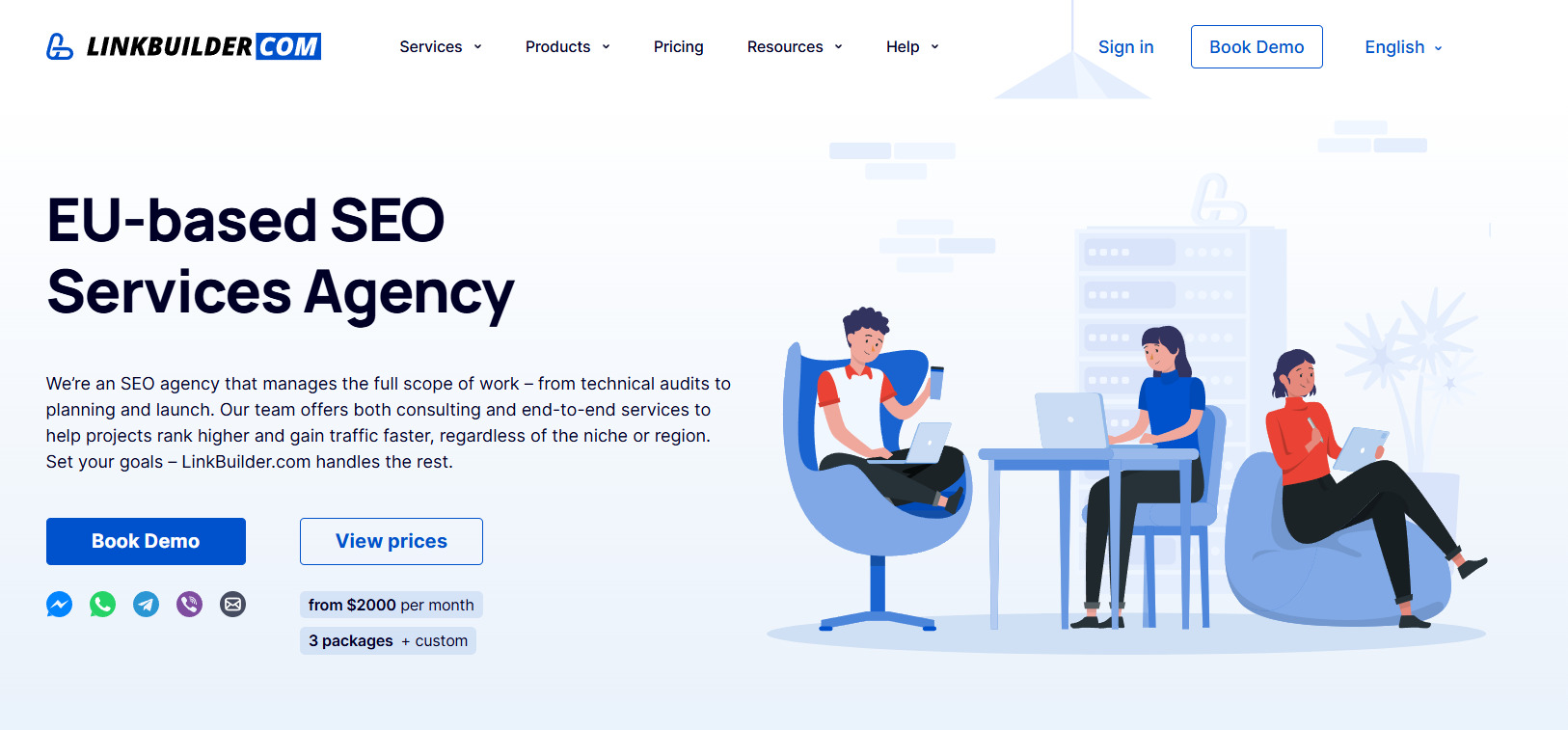
By ordering SEO services from LinkBuilder.com, you get:
- Holistic approach. Our experts treat content & SEO as part of a broader strategy, aligning with business goals, audience needs, and competitive landscapes.
- Deep expertise. We specialize in niches like cryptocurrency, travel, education, artificial intelligence, and IT, adapting to algorithm changes.

- Resource savings. Outsourcing SEO content creation eliminates the need for in-house training or costly tools.
- Guaranteed results. Unlike freelancers, we ensure effectiveness and make adjustments if goals aren’t met.
- Competitive edge. Professional SEO content for website sets you apart from competitors who undervalue quality content.
- Transparency. Regular reports and dashboard access let you track progress.
SEO content costs may be higher with professionals than freelancers or in-house efforts, but the long-term ROI justifies the investment.
LinkBuilder.com offers tailored content packages, from one-off posts to comprehensive strategies with analytics. Schedule a demo for customized solutions.
